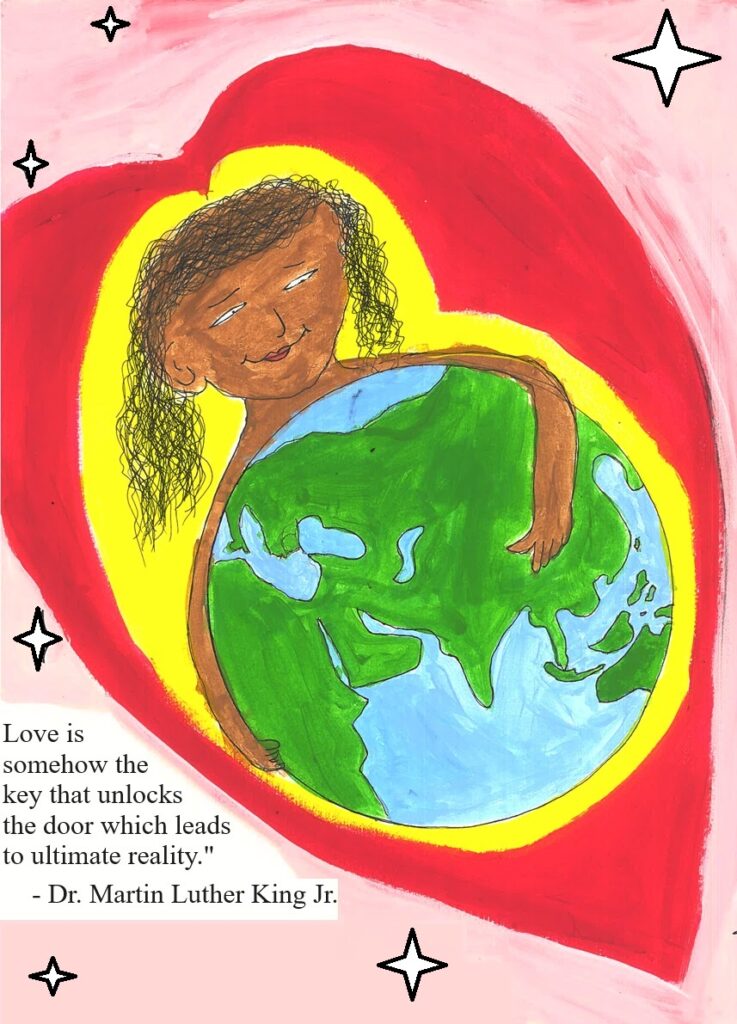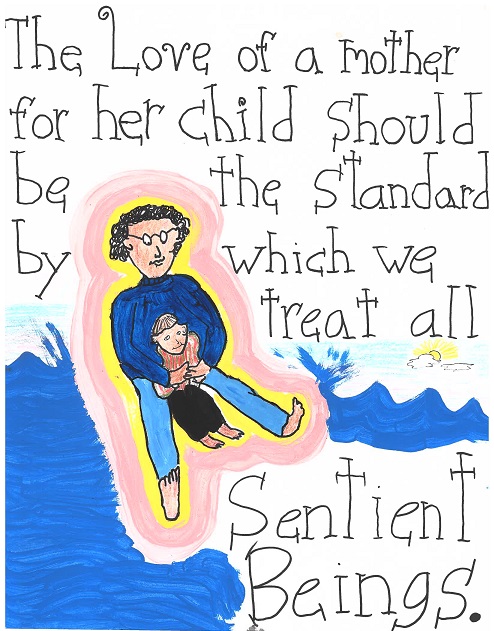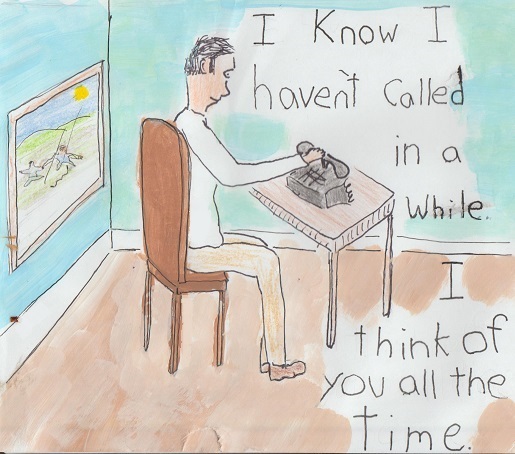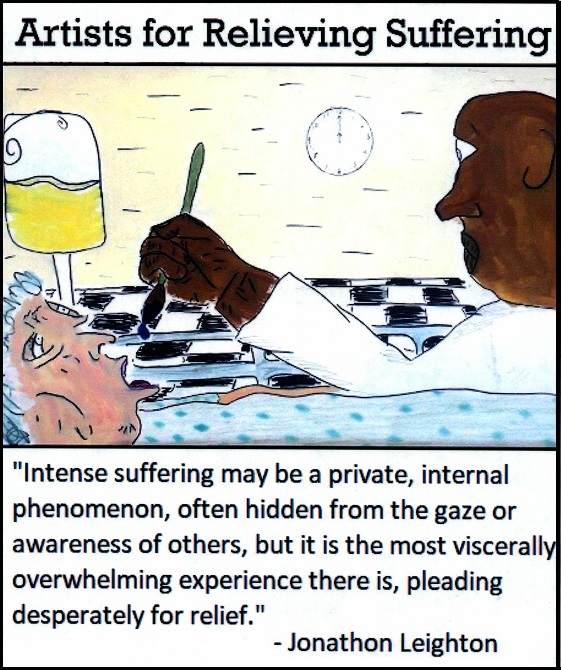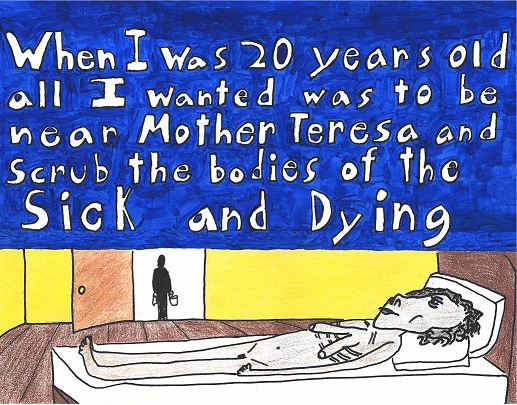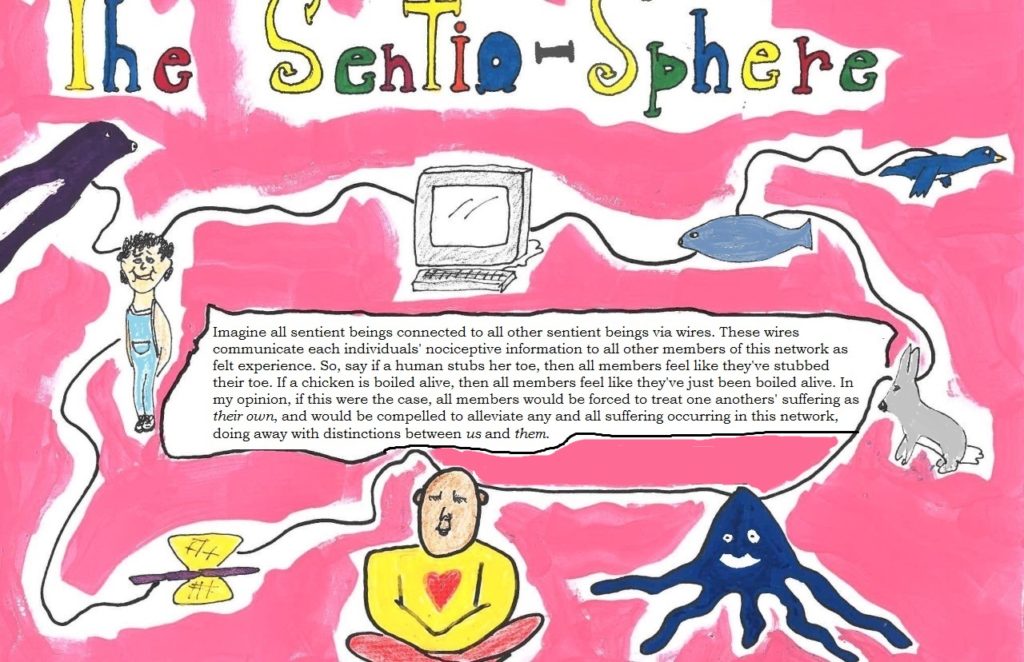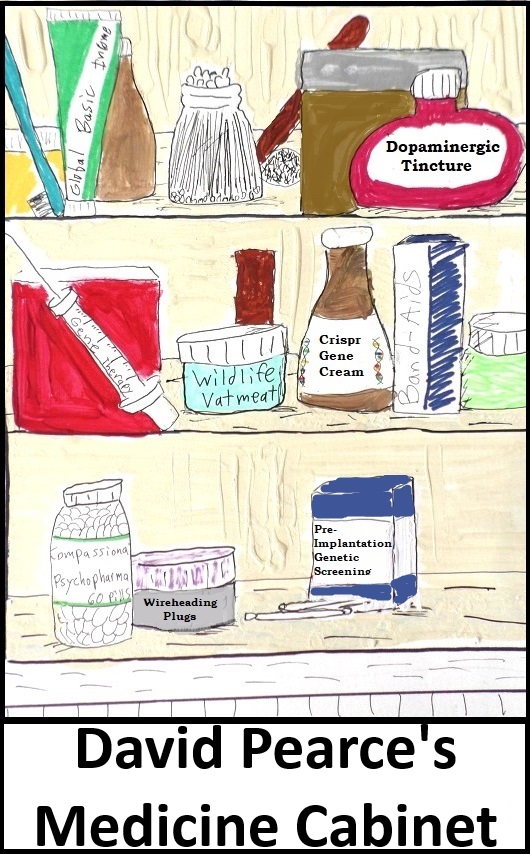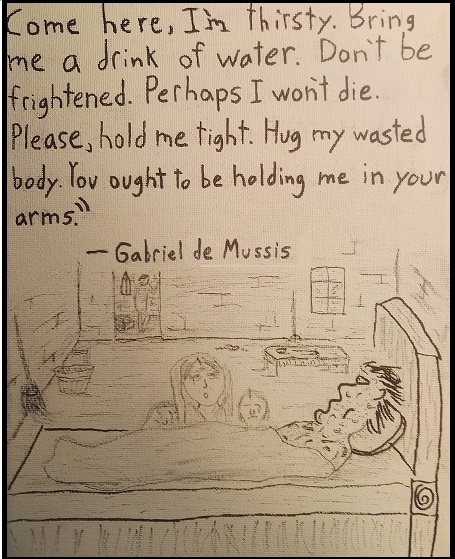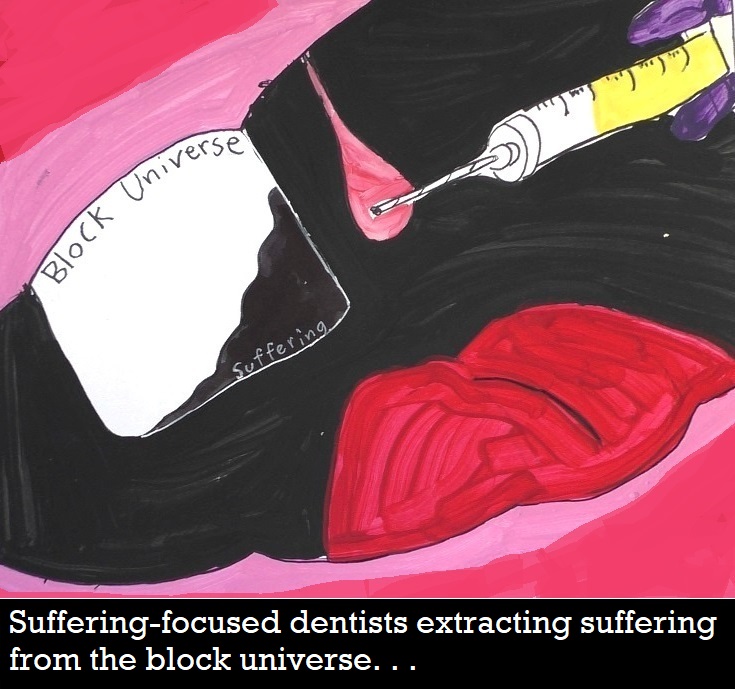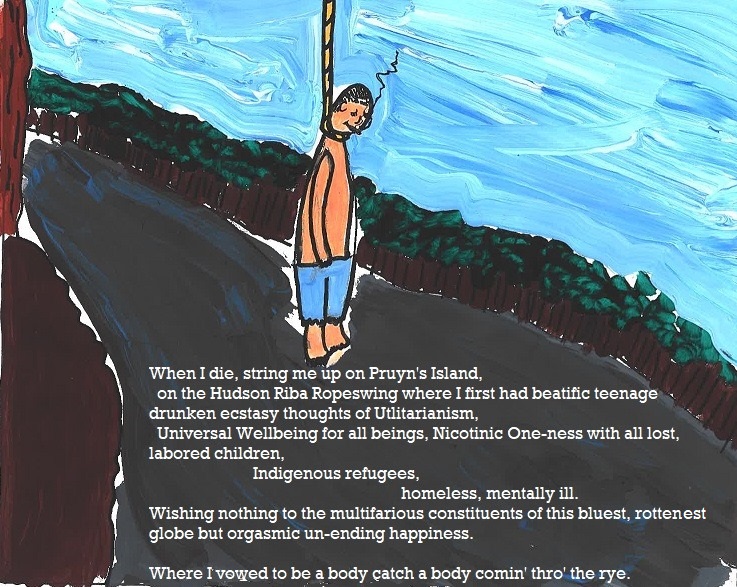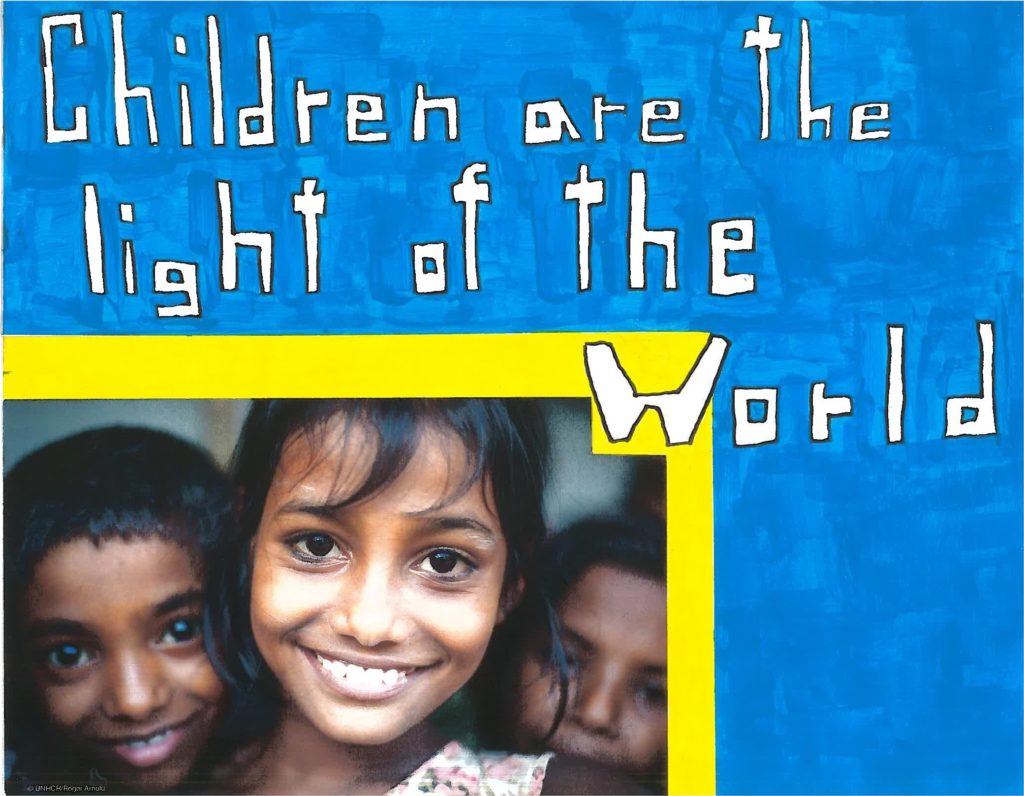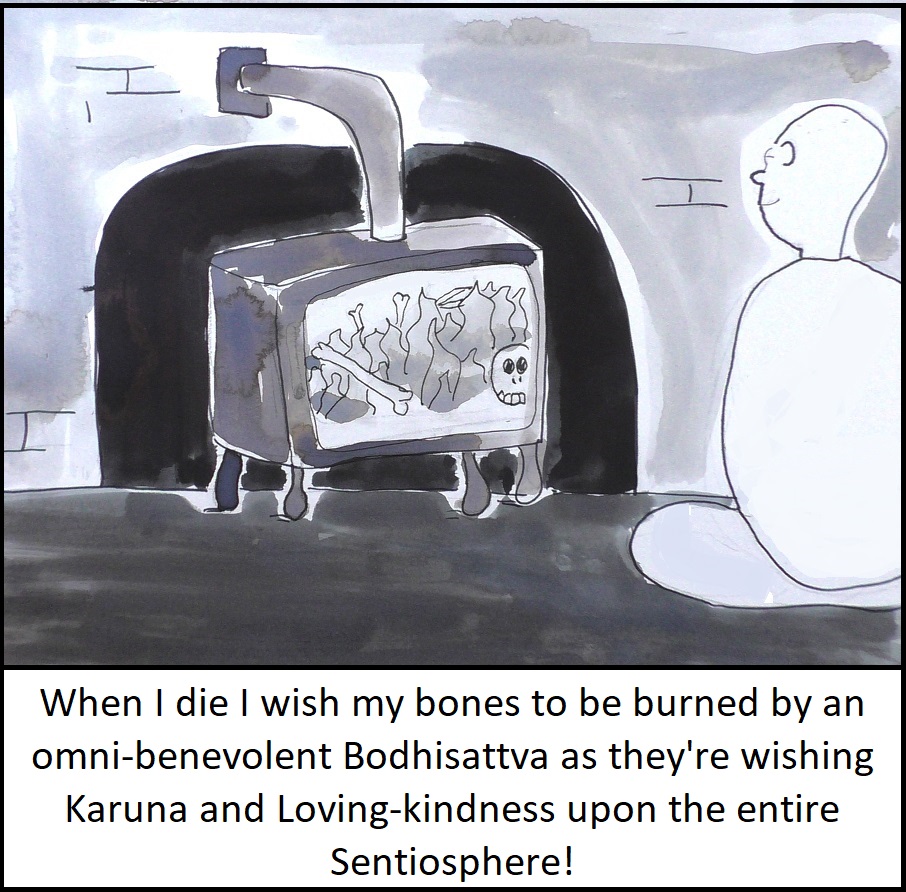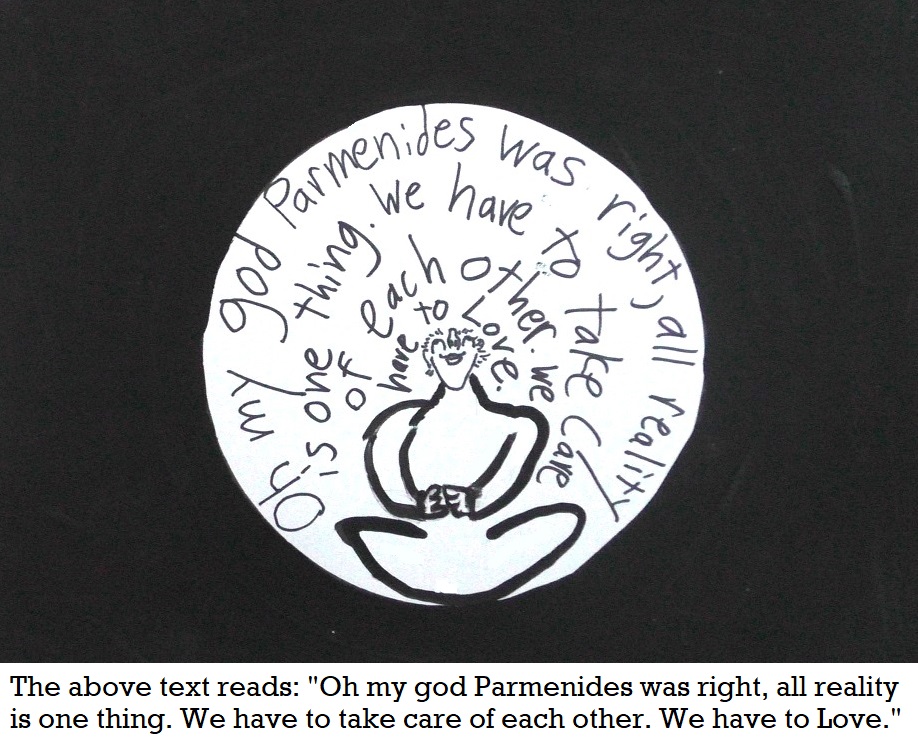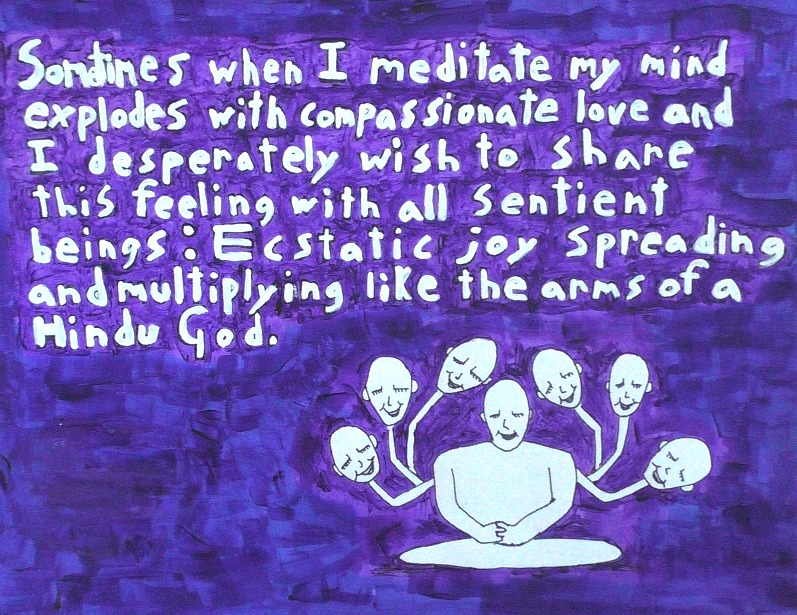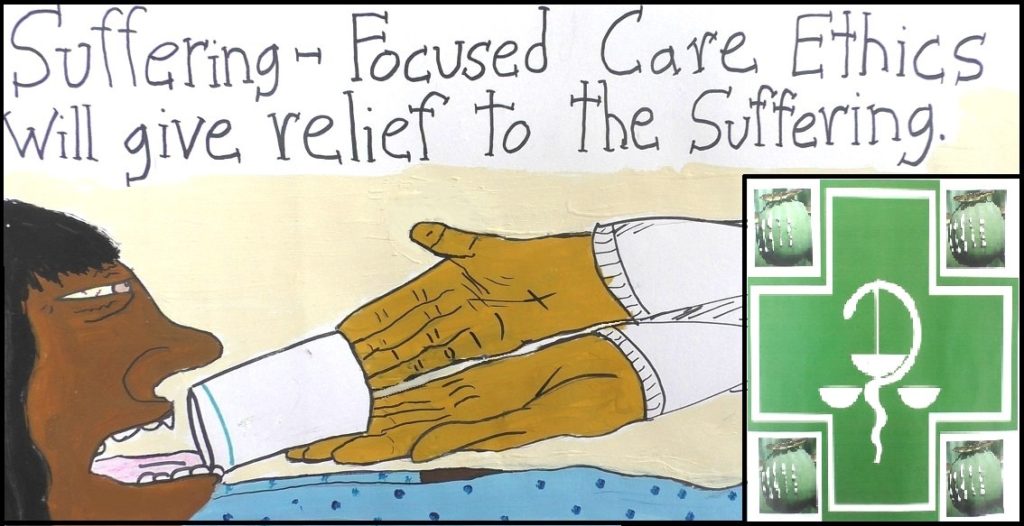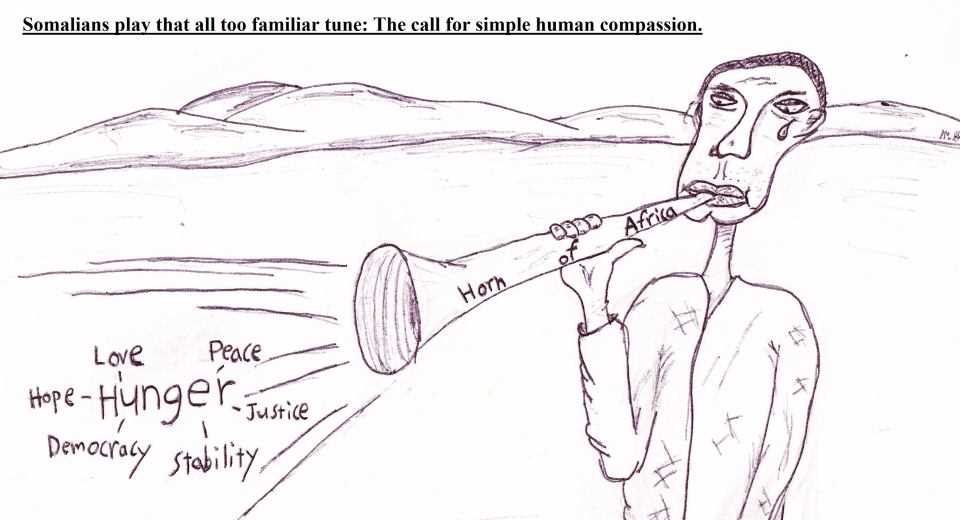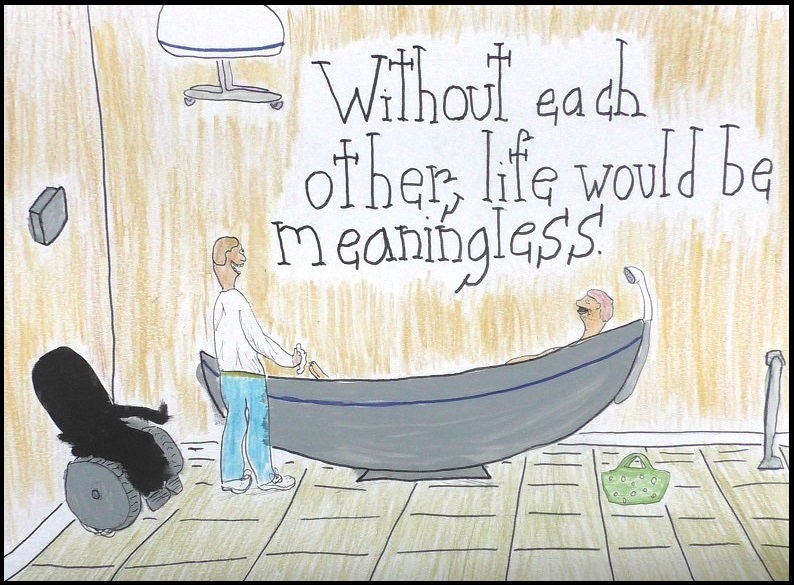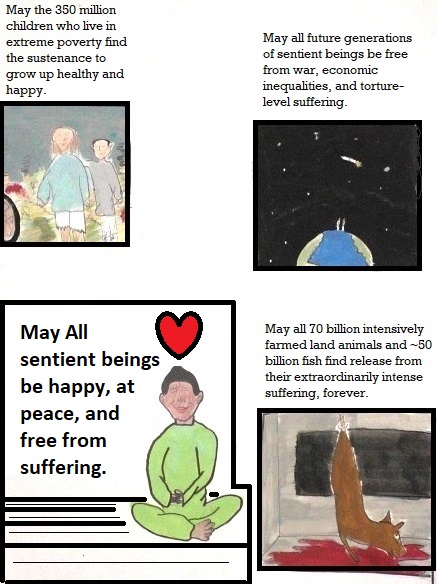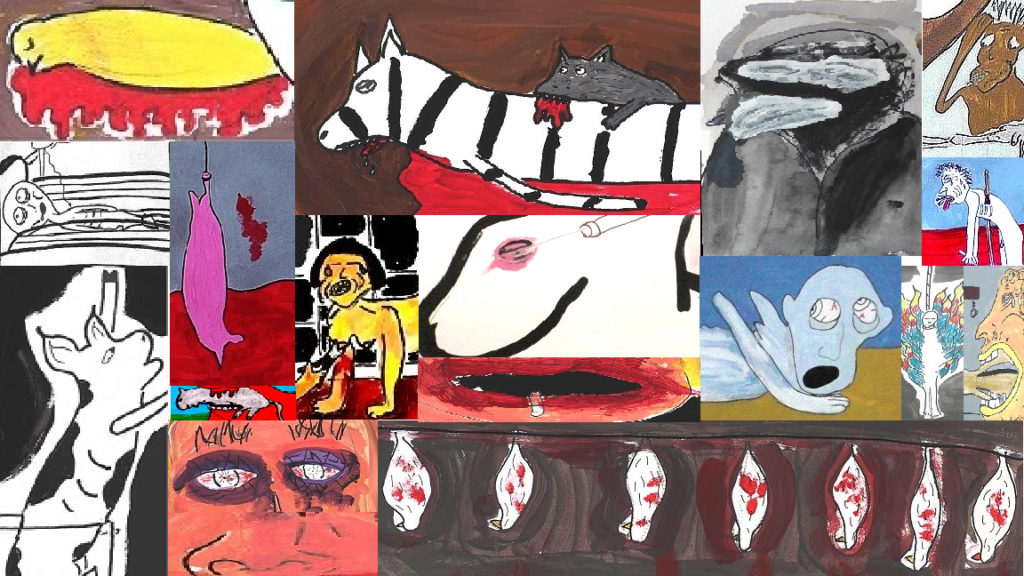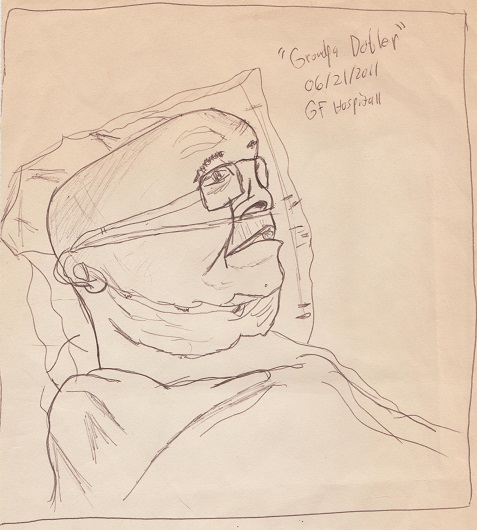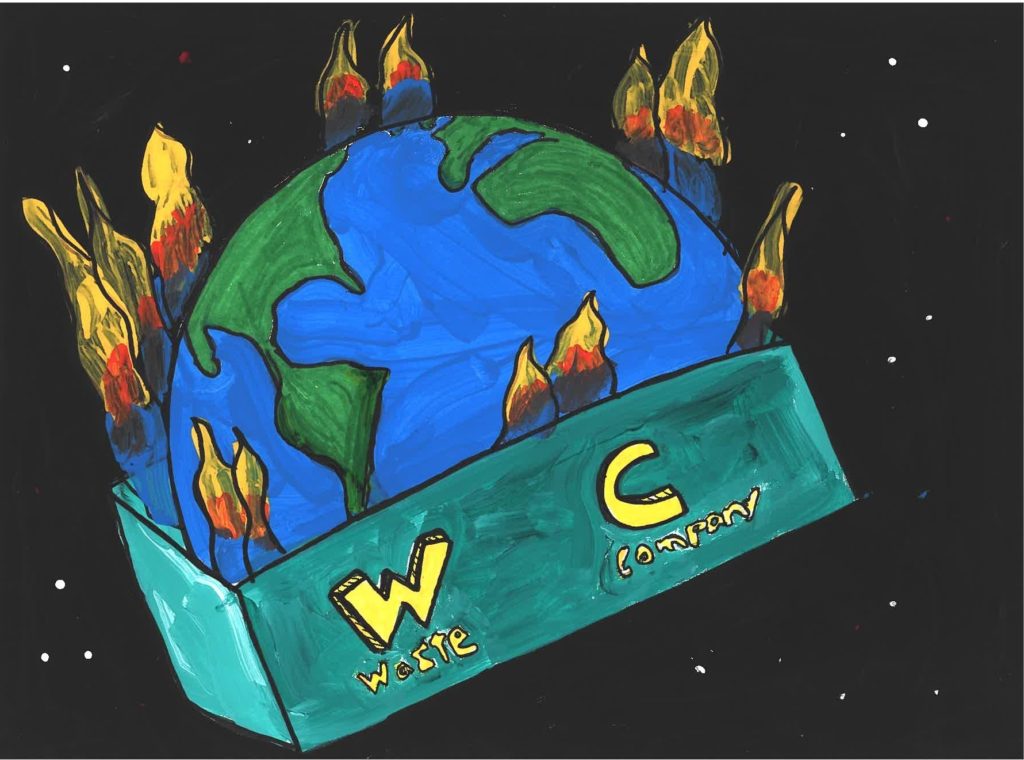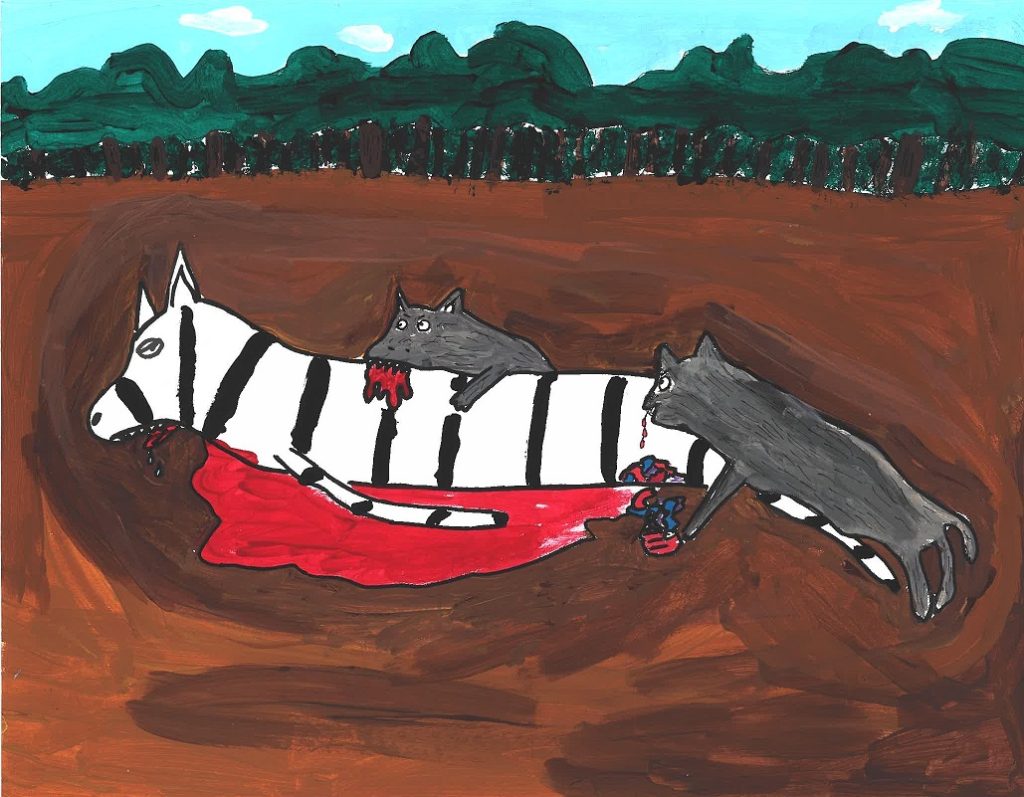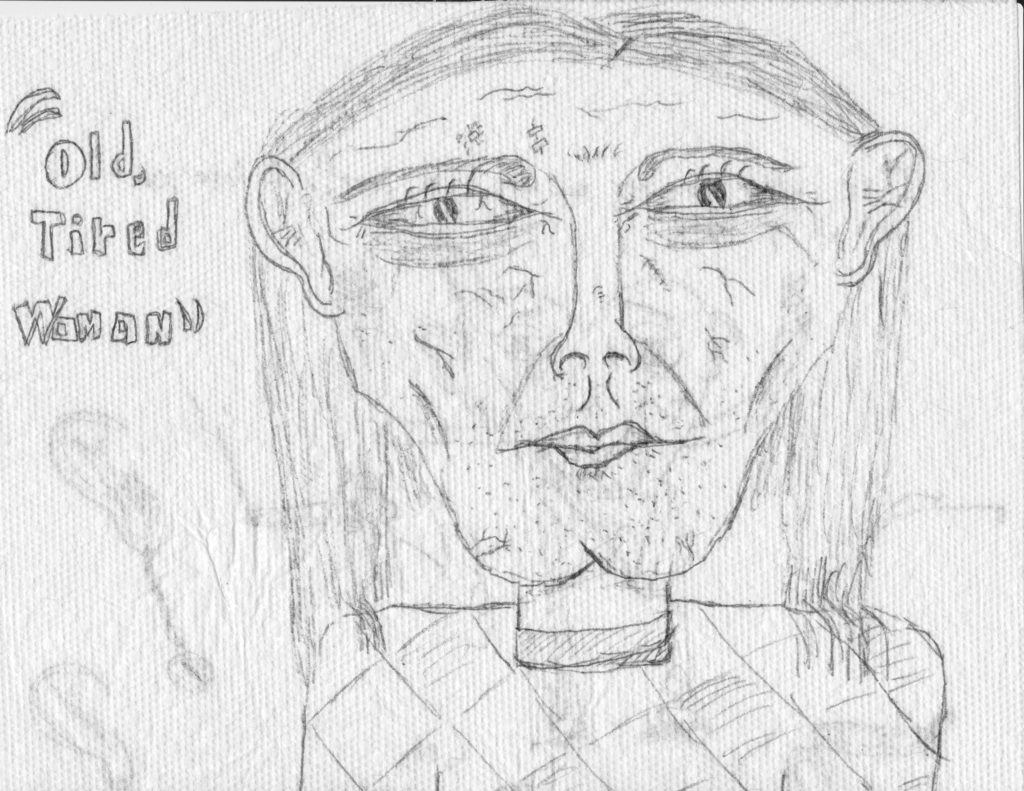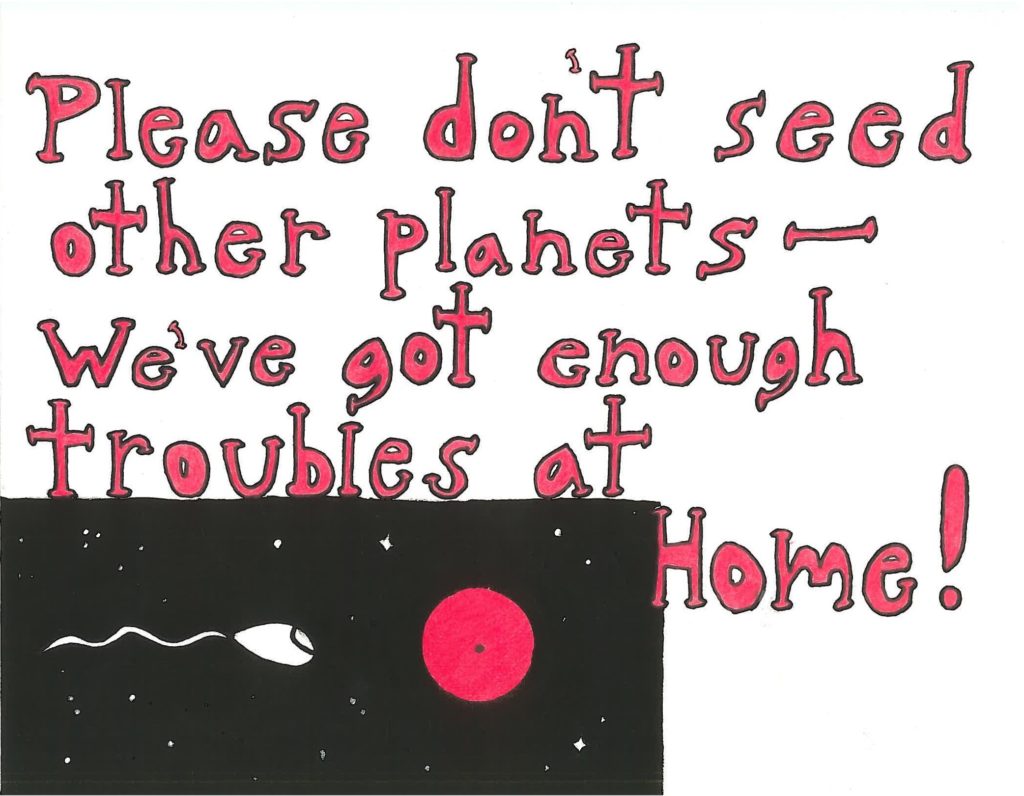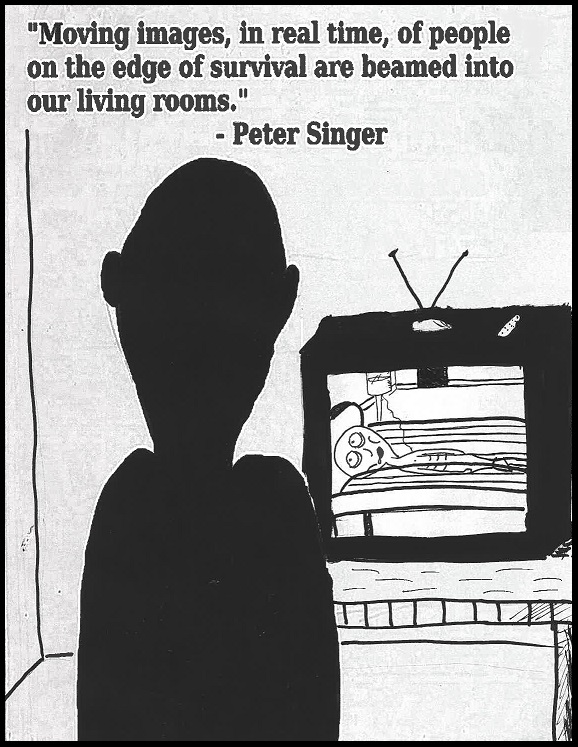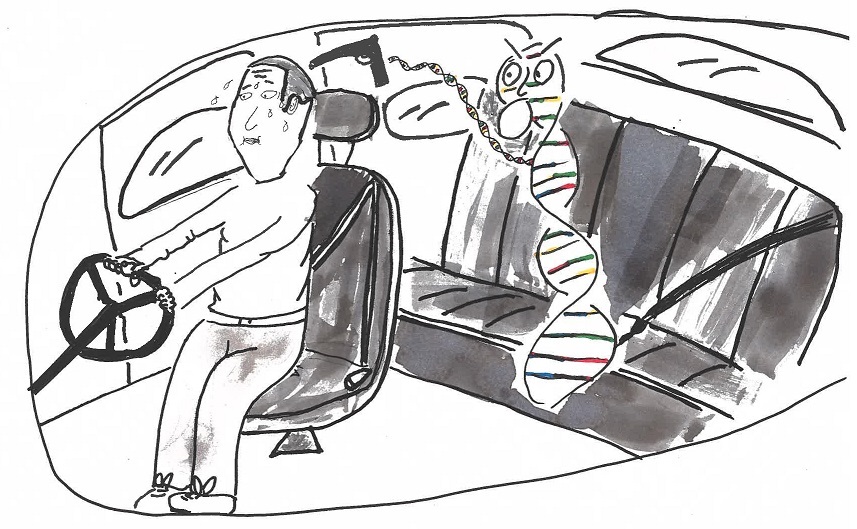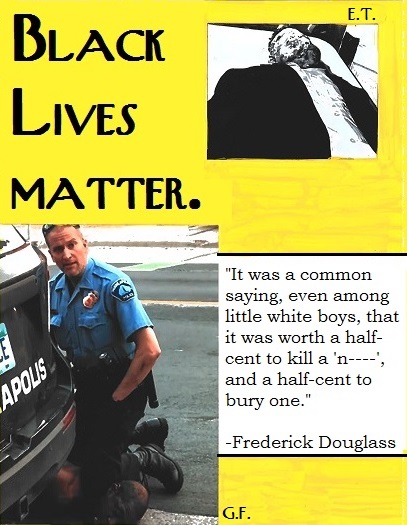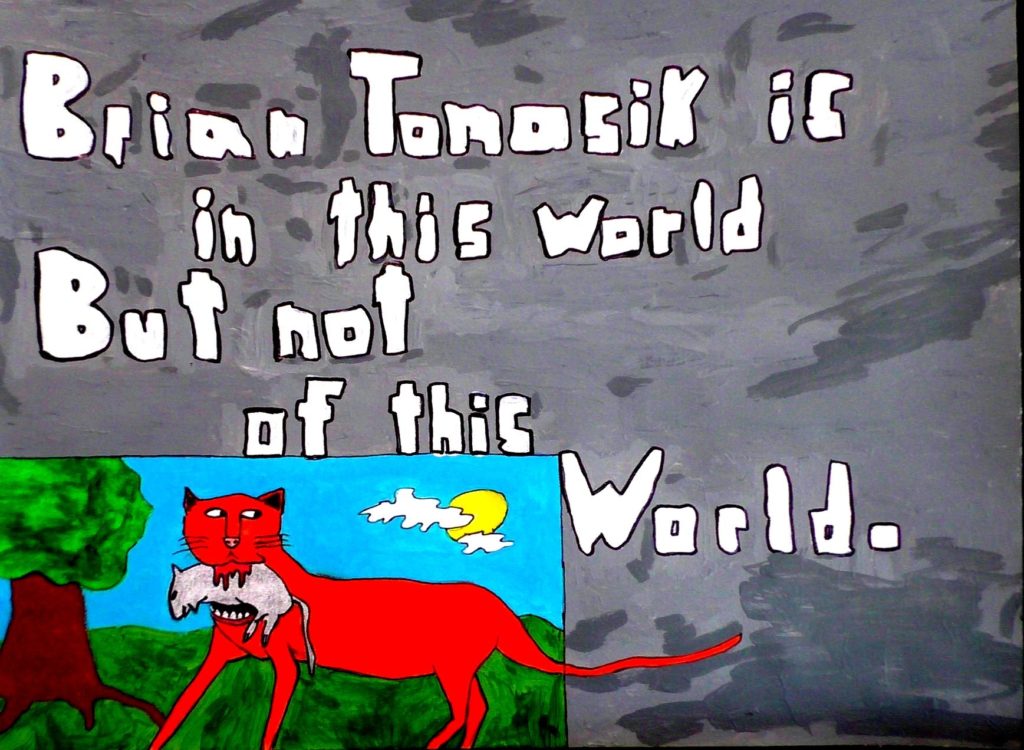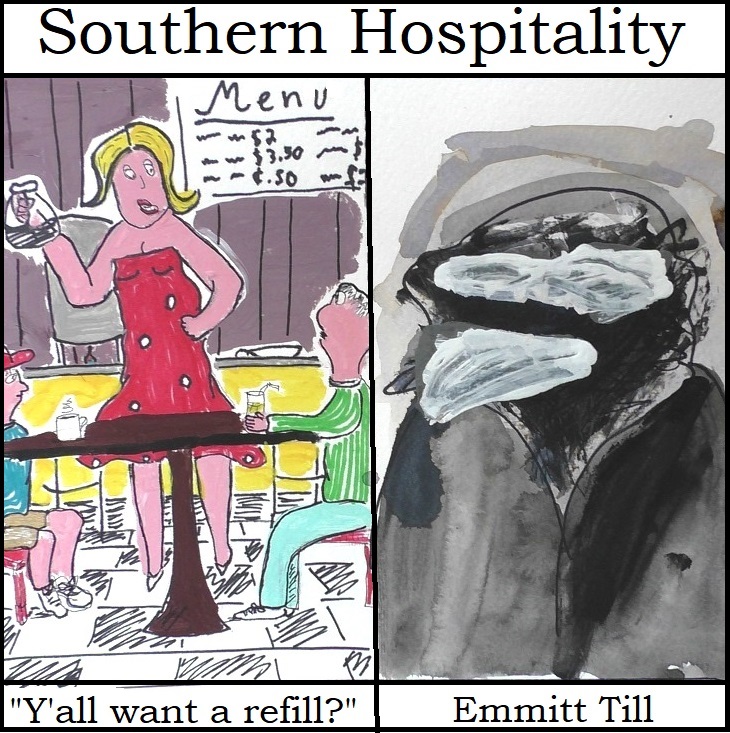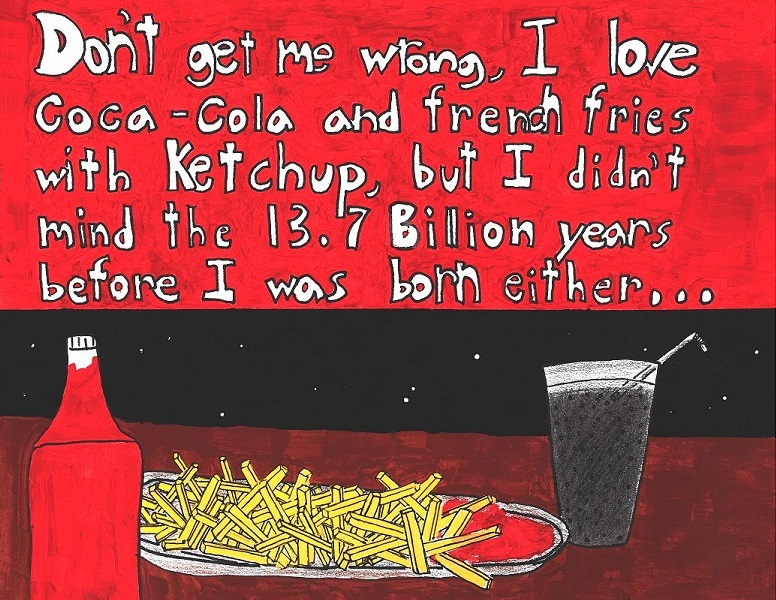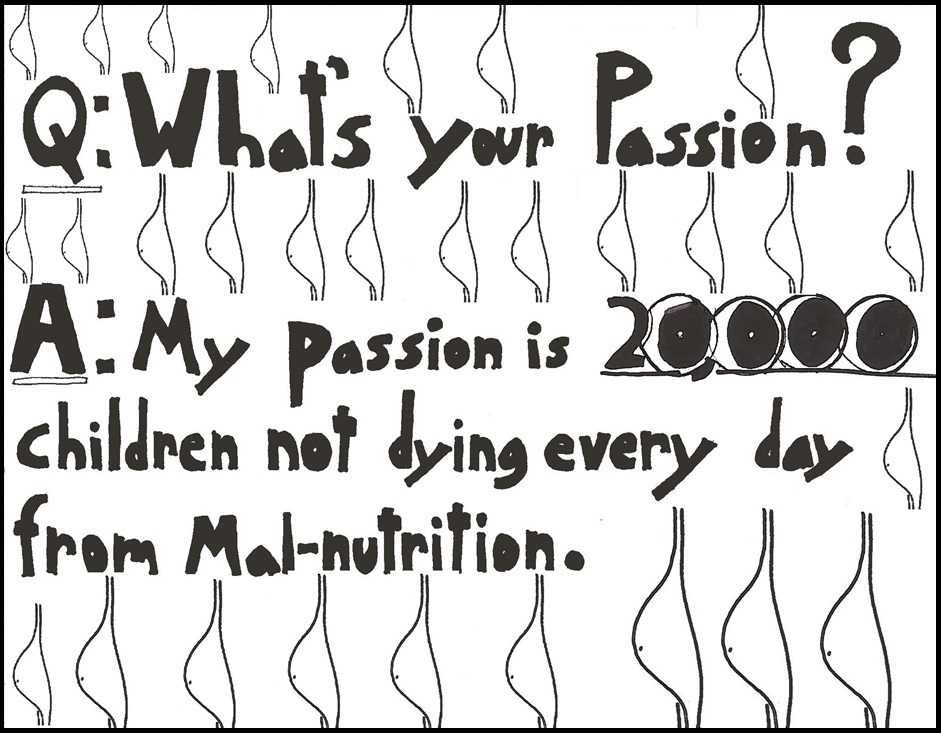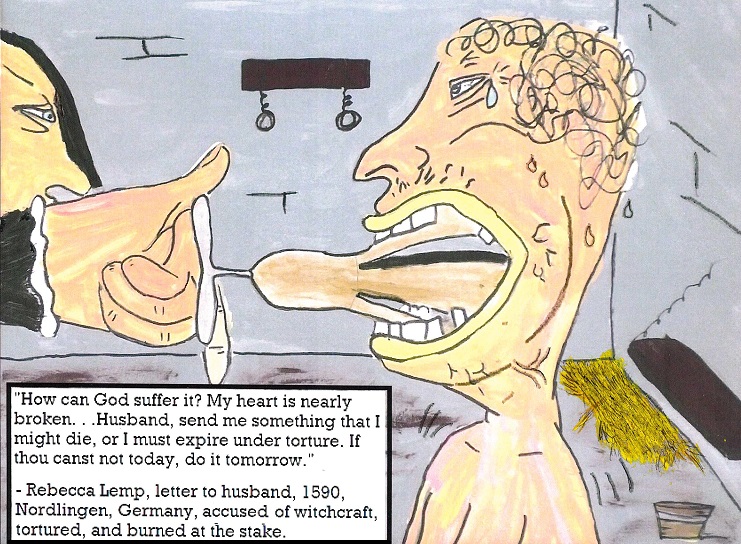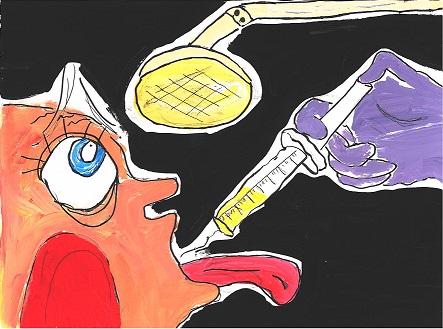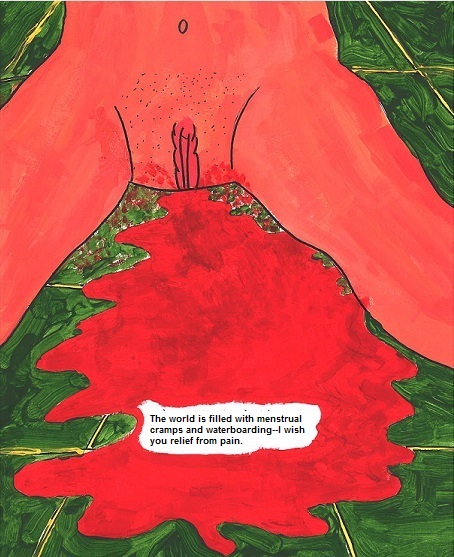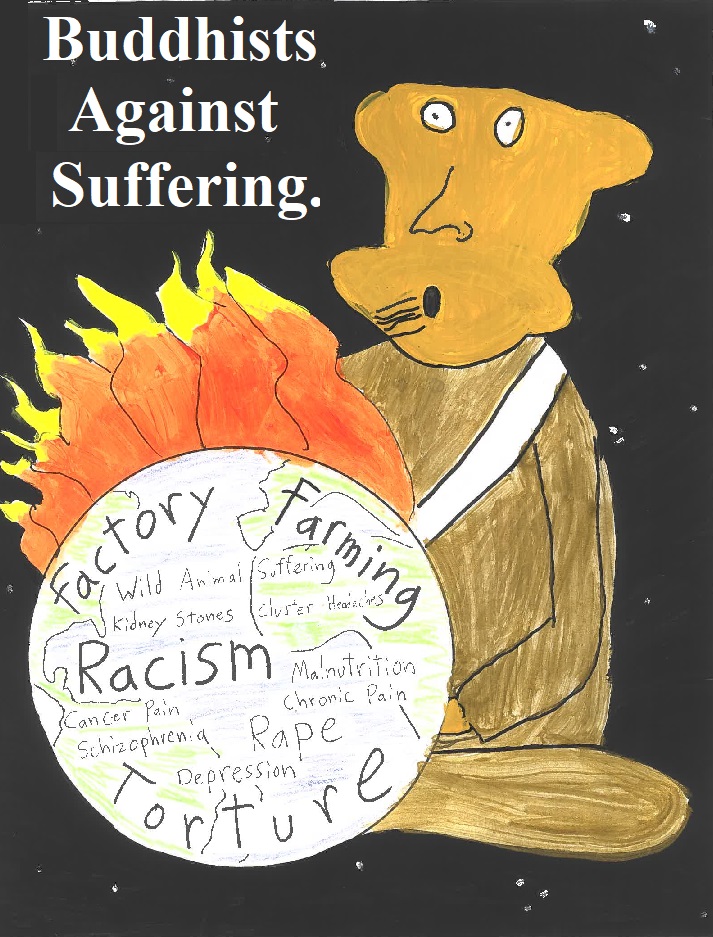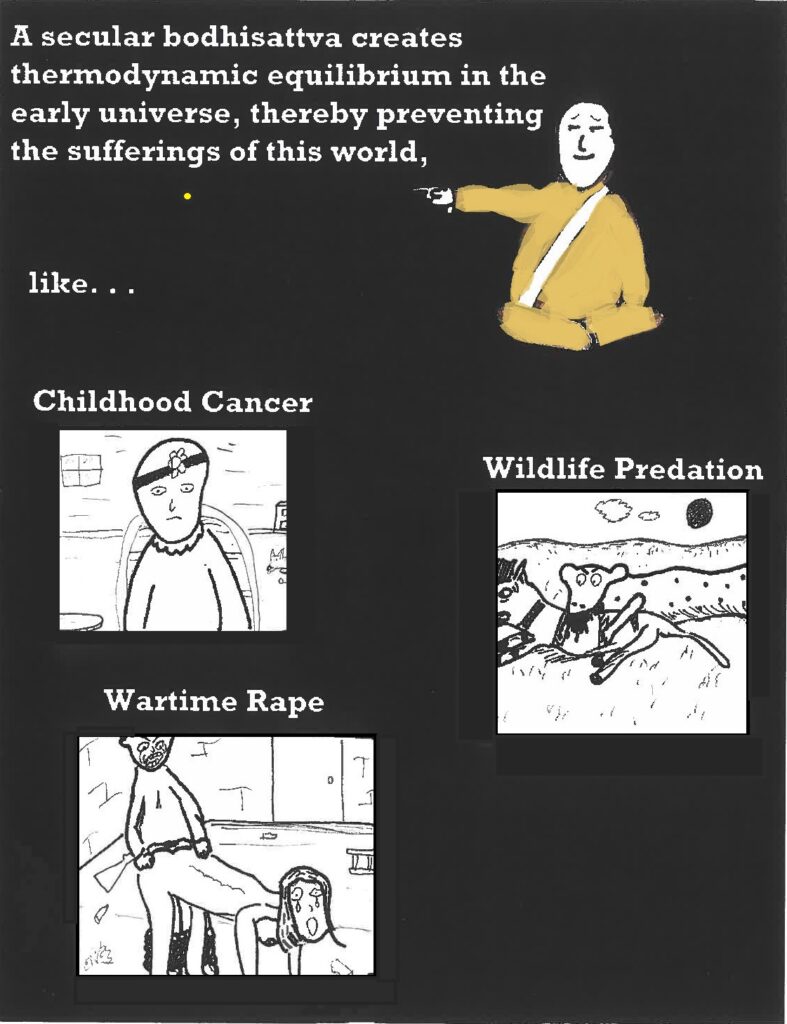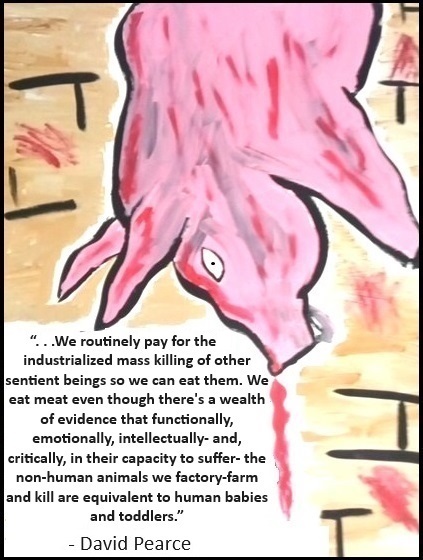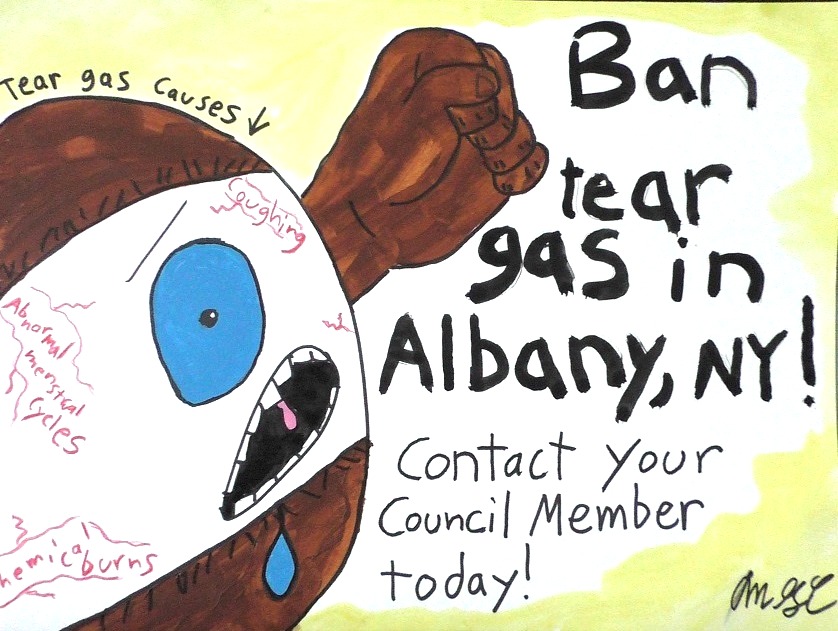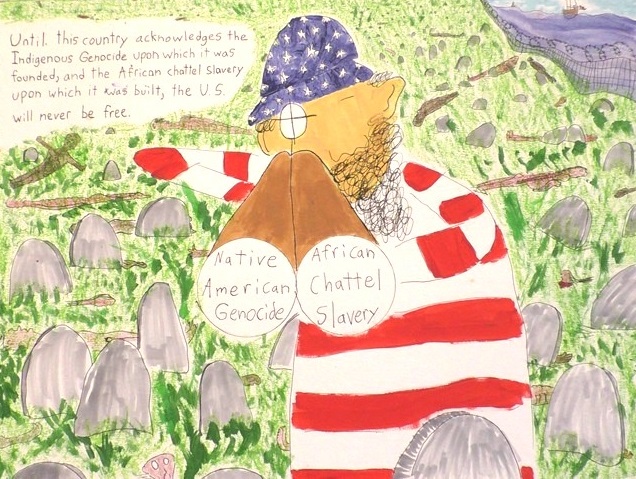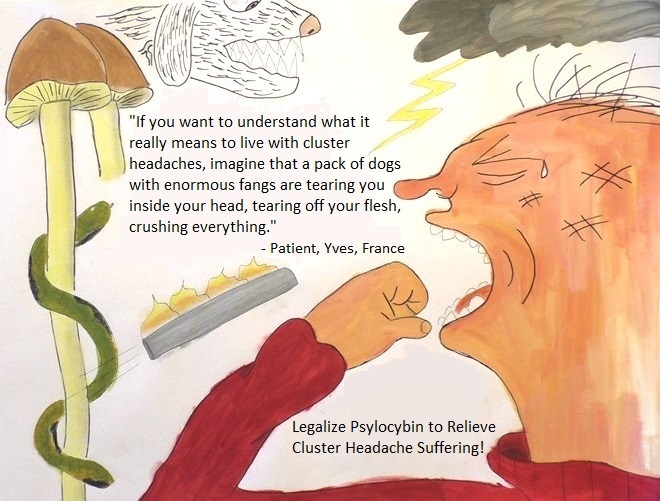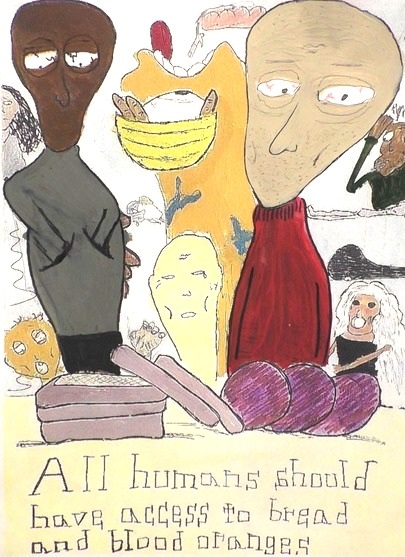“What I love is to be alone with a canvas and paints, and sometimes the pain goes away.”
Michael Kort

Here is a gallery of my artwork. I’ve broken the pieces down thematically into:
My cartoons are on a separate page.
Artists’ Statement
My artwork expresses the desire to relieve suffering in the world and care for the most vulnerable. Suffering is an emergency that calls for immediate relief, and the love we show each other in moments of pain and the drive to be there for others when everyone else has given up is, I think, the most powerful idea in the world.
The ideas running through my head most days are: Pleasure, happiness, and the transubstantiation of these feelings into suffering reduction for all sentient beings. Pleasure is only fun if no one is left out, and in our world lots of beings are left out. I won’t stop making this art until all children have access to food, clean water, healthcare, and education, until all factory farmed animals are free from the torments of the battery cage, farrowing crate, and tail docking, until the day when wild animals no longer have to worry about predation, freezing to death, or parasitism. Until then, my mind is restless.
Arts Creation Process
This is how the art creation process works for me: Like Socrates’ Daemon, an Art daemon possesses me. I will meditate or hear a song or experience a different ecstatic phenomenon and concomitantly the daemon appears telling me to make art expressing universal compassion for all sentient beings. I will feel a love for all beings beyond language, combined with the sense that if all beings felt as I did at that moment, the world would be perfect. Then while scrounging for pen and paper I frenetically imagine shoveling my happiness into a great furnace of suffering-reduction until all beings capable of experiencing pain and suffering are freed from those most unfathomable bondages, forever.
Love Ethic/Care Ethics Art:
Care Ethics is an ethical theory that starts from a relational ontology. This means that relationships have primary moral value, and that when deciding how to act in the world we reference the love and care we have received, and collectively attempt to emulate those behaviors, feelings, and actions in public and private relations. Care Ethics Art promotes, inspires, and celebrates the compassionate, empathetic, and healing energy we strive to act out every day.
Sentio-Social Realism
“An injury to one is the concern of all.”
– Knights of Labor motto
Social Realism is art that highlights the suffering and poor living conditions of humans. Historically it has depicted the hungry, the homeless, the impoverished, and those struggling for fair working conditions in the context of the labor movement. Implicit in the artwork is the call to alter social and economic systems to improve the lives of those featured in the art. Sentio-Social Realism is similar, except that it expands its interest from humans to all sentient beings and considers all forms of suffering endured in the world. Subjects featured are animals being tortured on factory farms, animals suffering in the wild from predation and parasitism, and anyone, anywhere in the world suffering from a myriad of conditions. It calls for a world free from torture, free from hunger, free from lack of access to pain relief, free from enslavement, free from mental illness, free from intense suffering in any form.
Pleasure to Suffering-Reduction
This website was initially built to house my thoughts on the ineffable experience of pleasure, and the concomitant desire to transmute these feelings of pleasure into suffering reduction for all sentient beings. These artworks are my imperfect attempt to communicate this.


Animal Welfare Art
I’ve written about the oceanic suffering on factory farms. There are other domains where animals need our help: In the laboratory, on the racetrack, and in the wild (among myriad other places!) Animals vastly outnumber humans, so reducing their suffering is of utmost importance–According to National Geographic, ninety-seven percent of animals are invertebrates, mostly insects1. . .
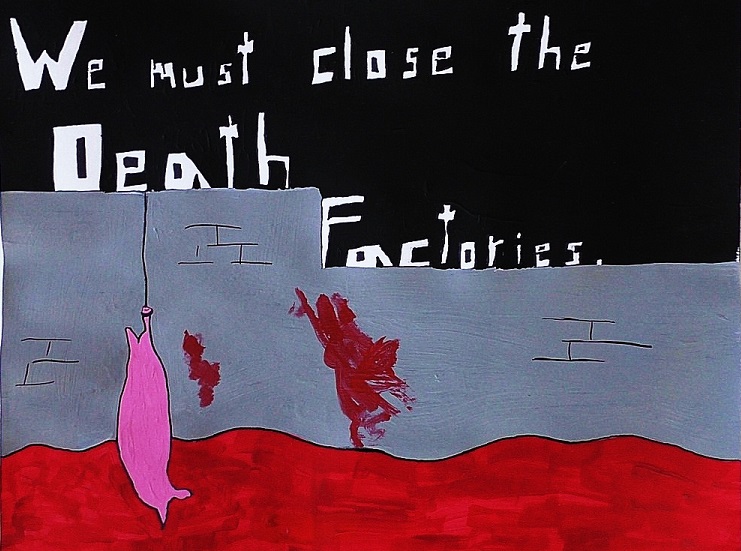
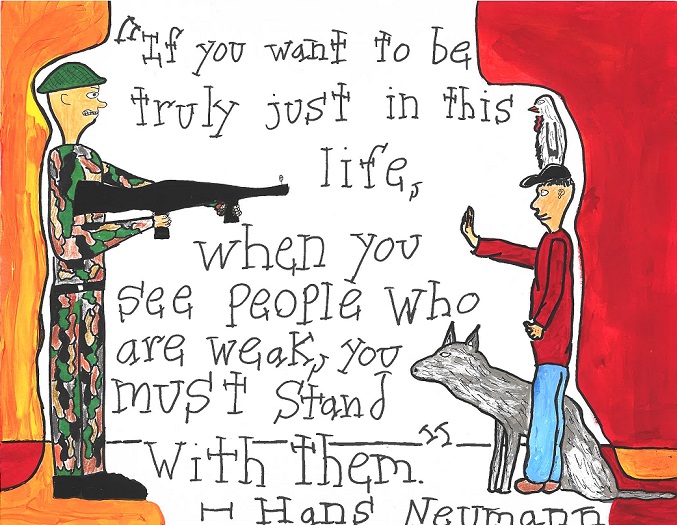
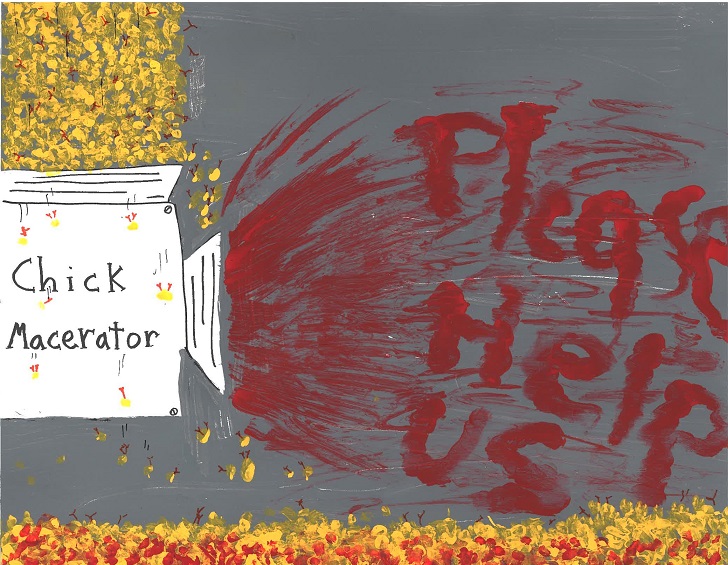
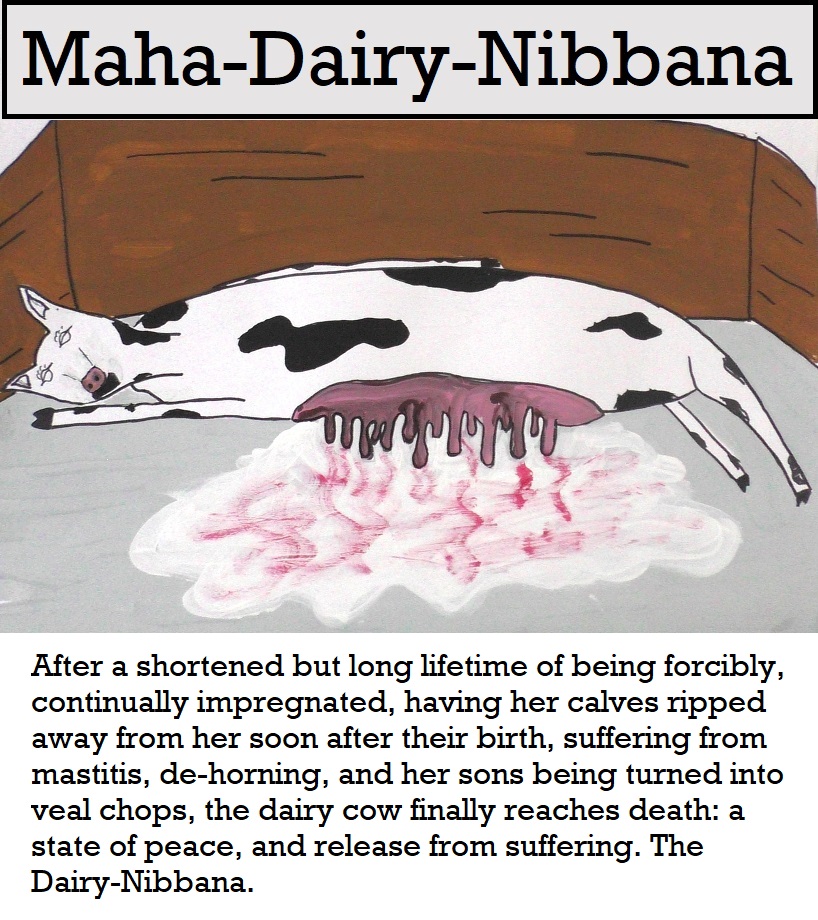
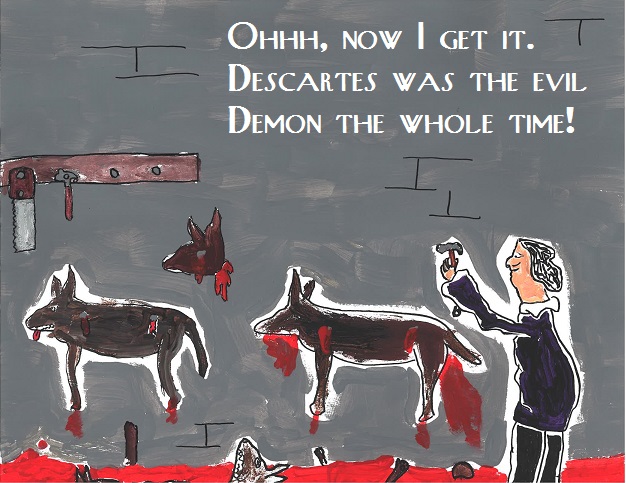

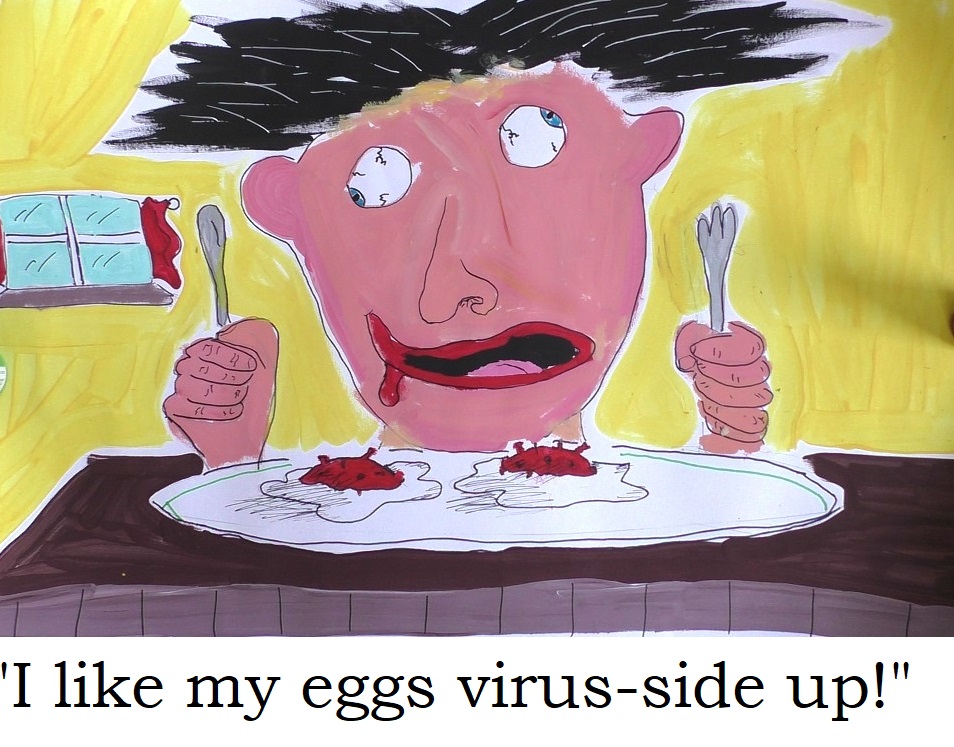
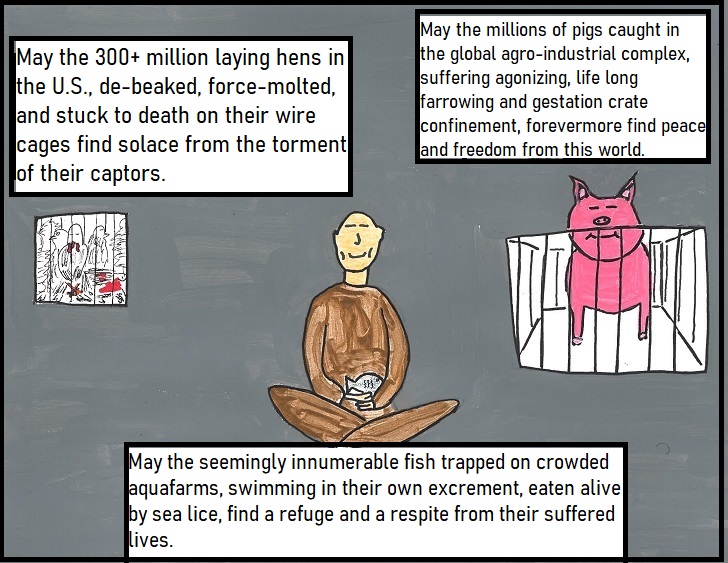



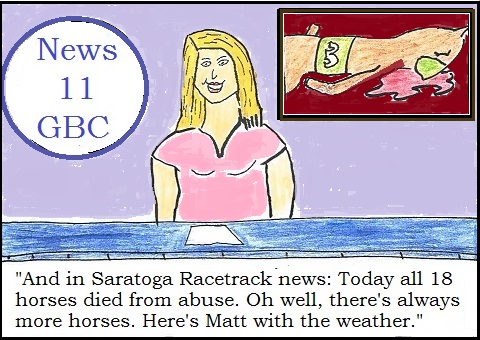
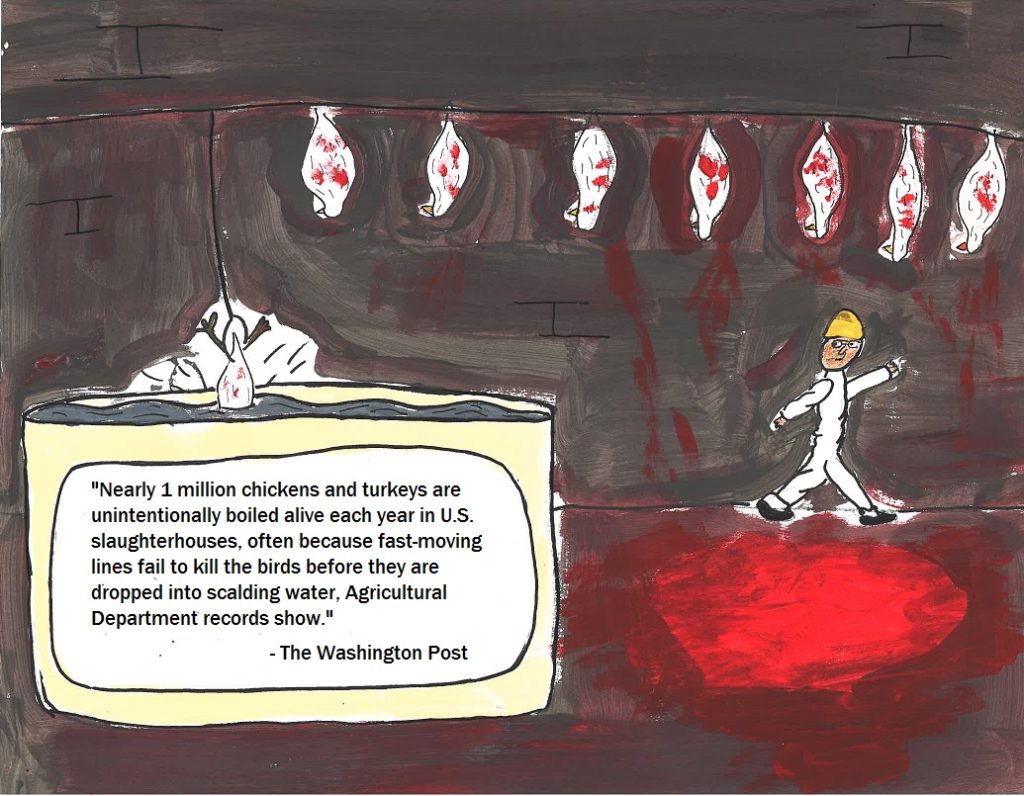

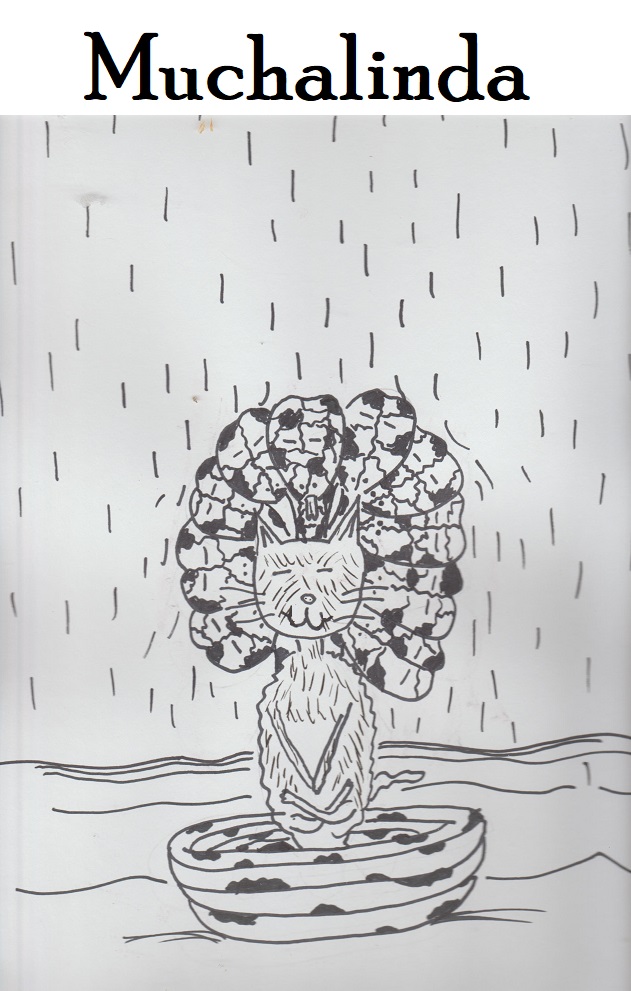
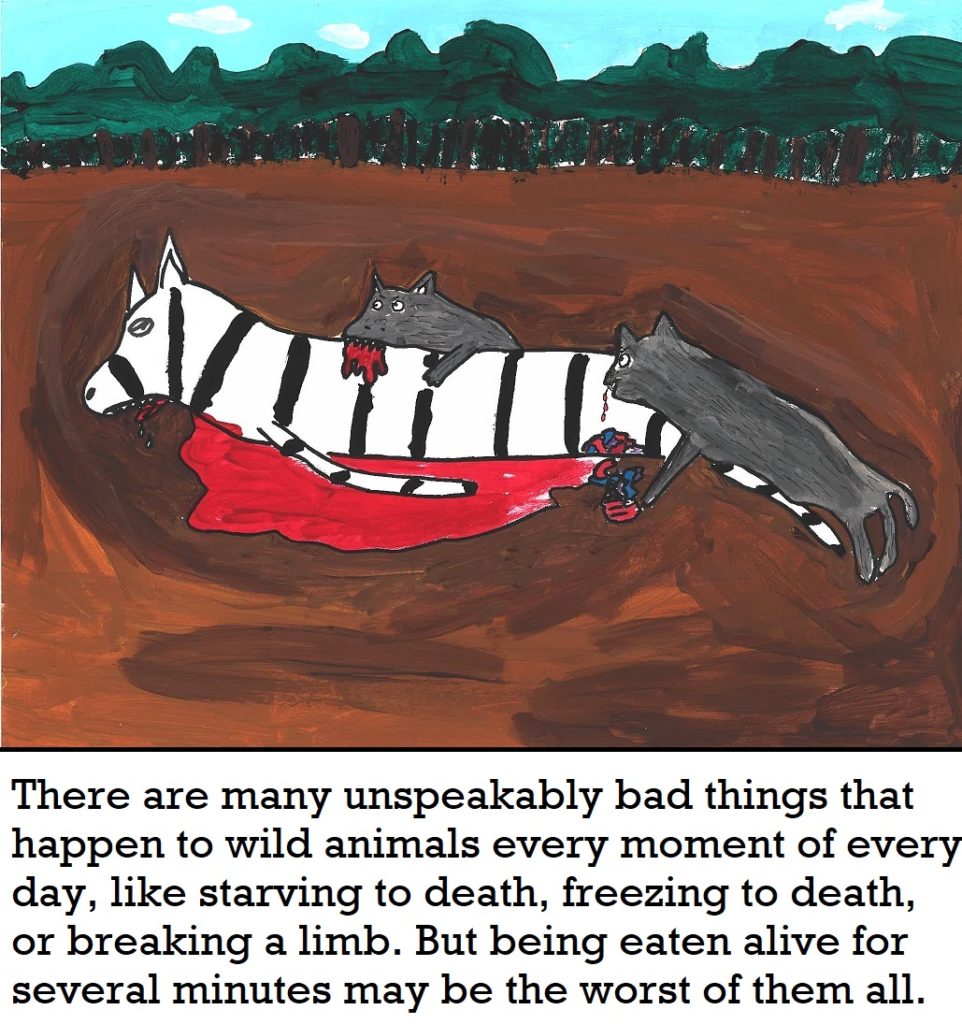
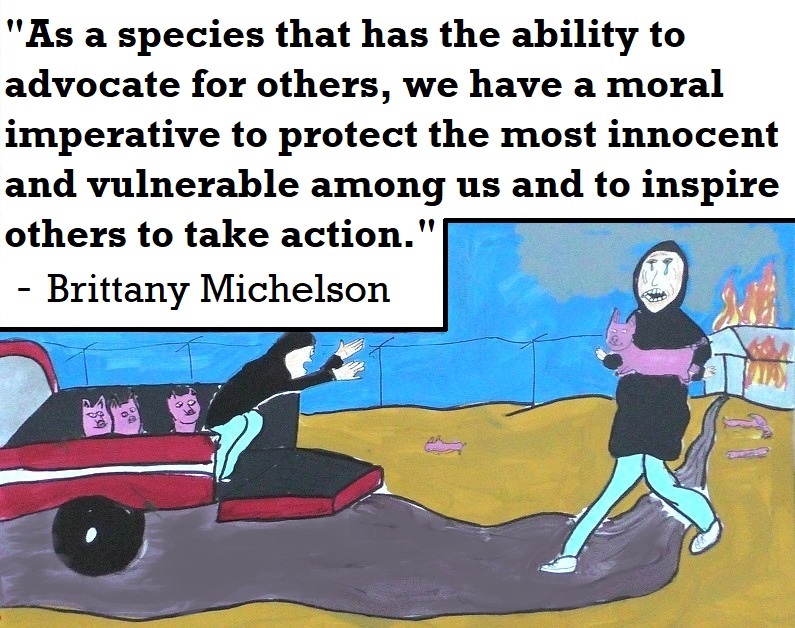
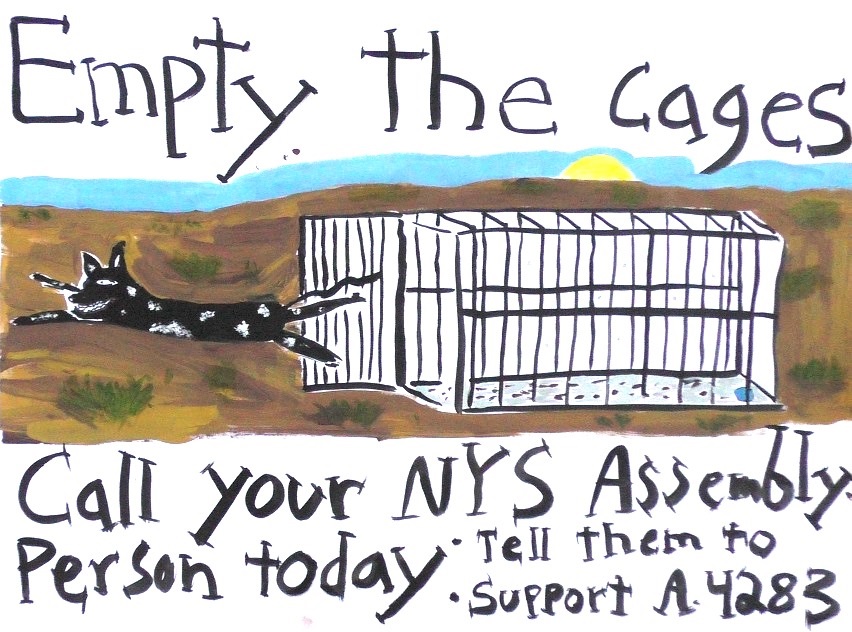
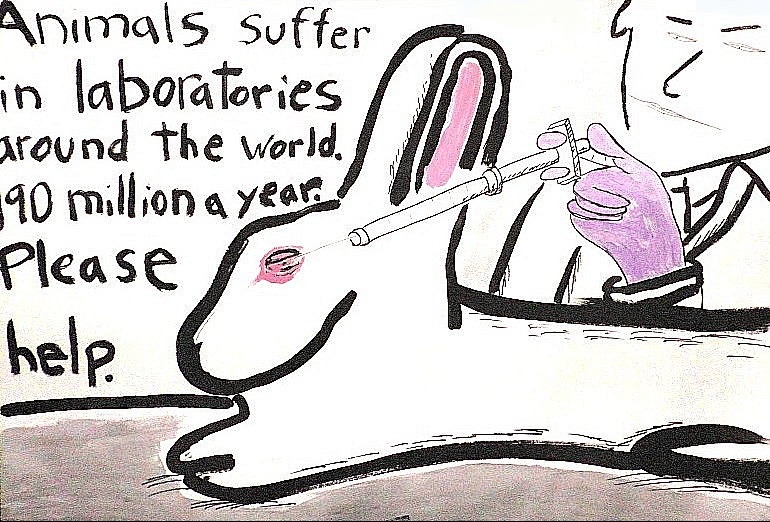
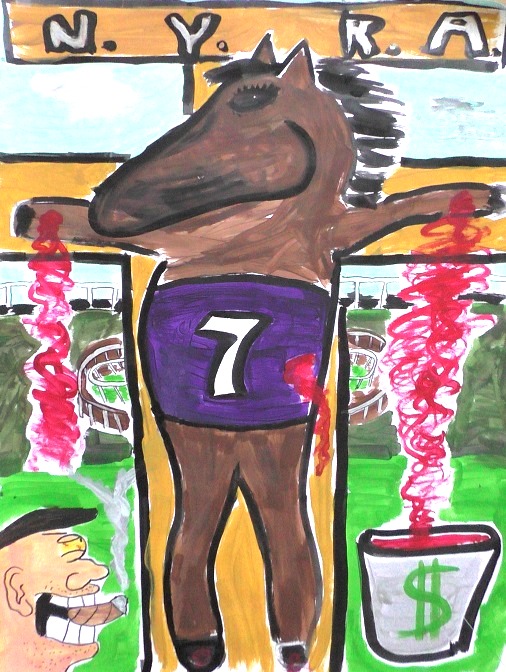


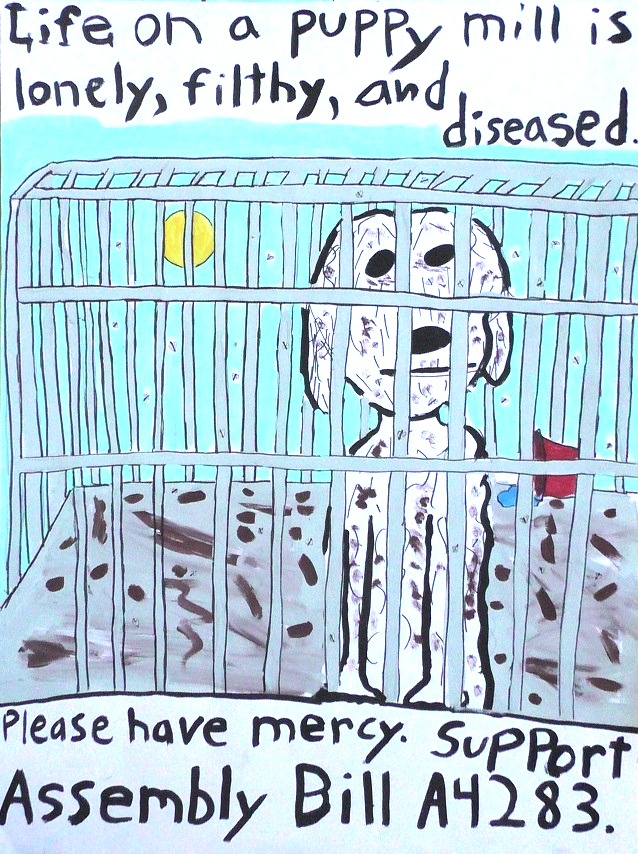
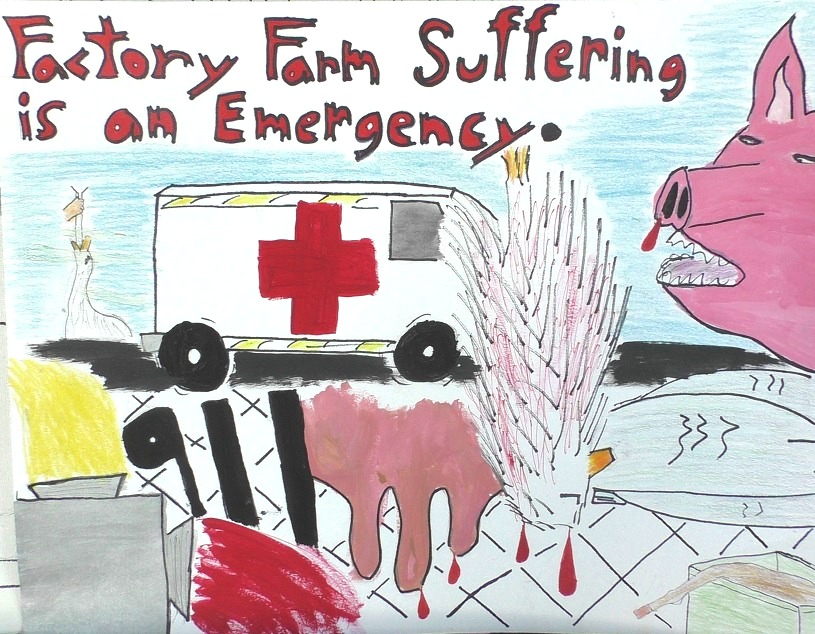
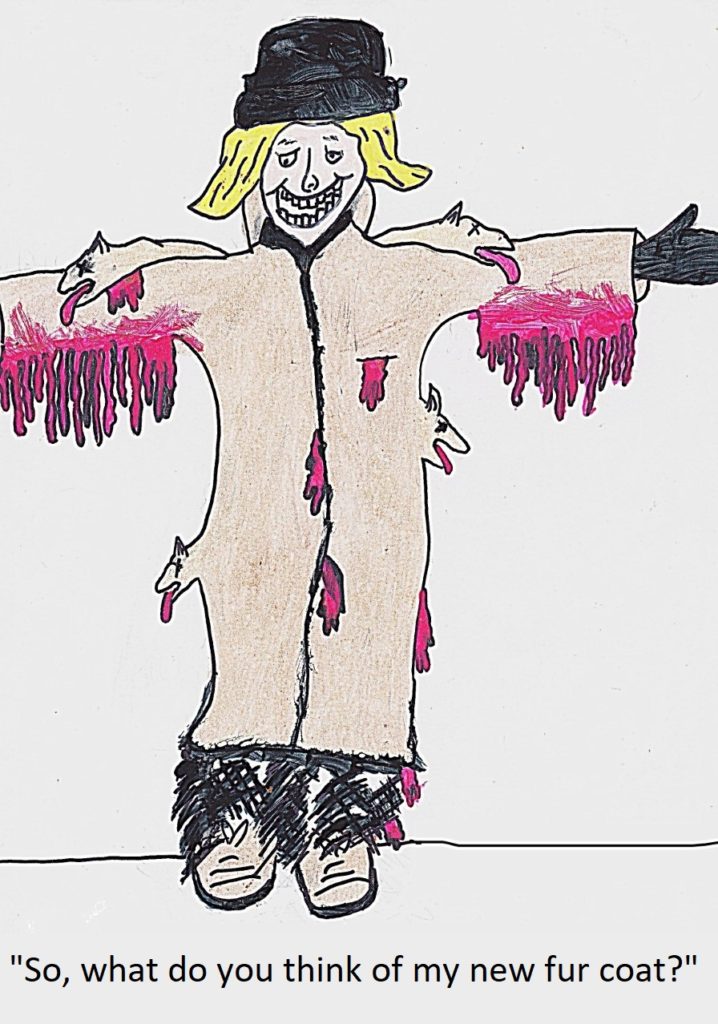
You can see a slideshow of these pieces with quotations and music here:
Mental Illness Art
“Sometimes, as we go through life, we master our experiences. Sometimes we don’t.” – Annenberg learner
These pieces are not meant to encourage anyone to seek mental illness (because they think it’s romantic), or to give up on life. I am simply ex-pressing the states of mind of particular person moments. If you are suffering from mental health issues you ought to seek help, because you are probably better suited than anyone to help others. You understand pain. You’ve seen hell in the real time. You understand what it’s like to be on the edge of eternity. . . The world needs your wisdom.
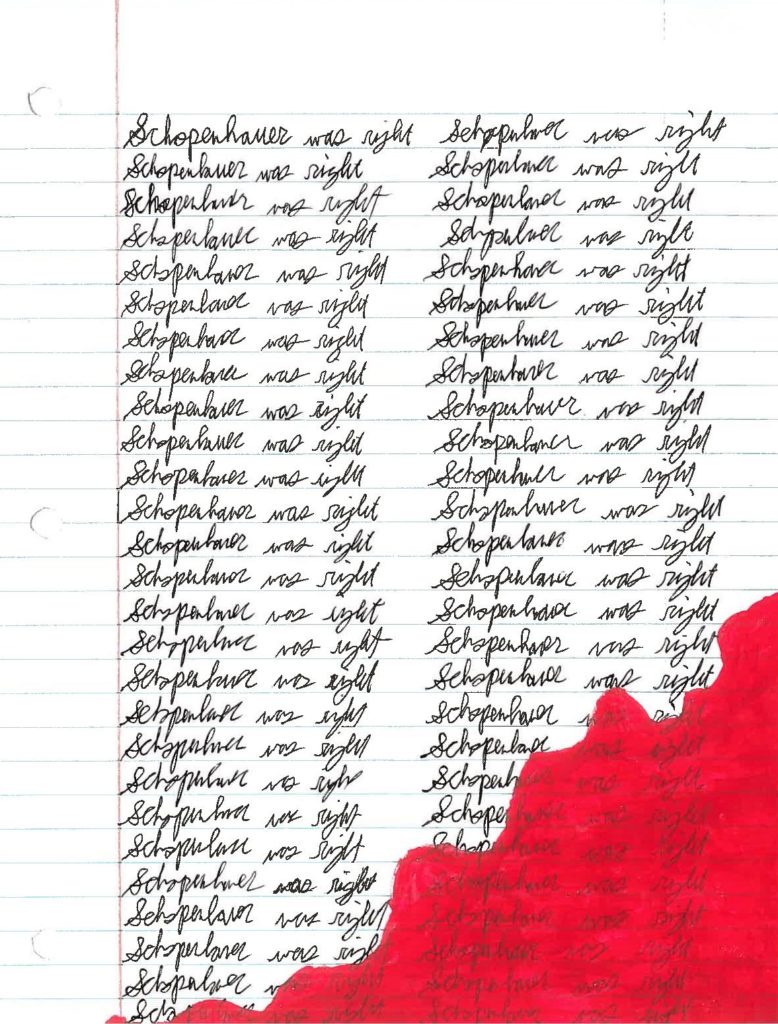
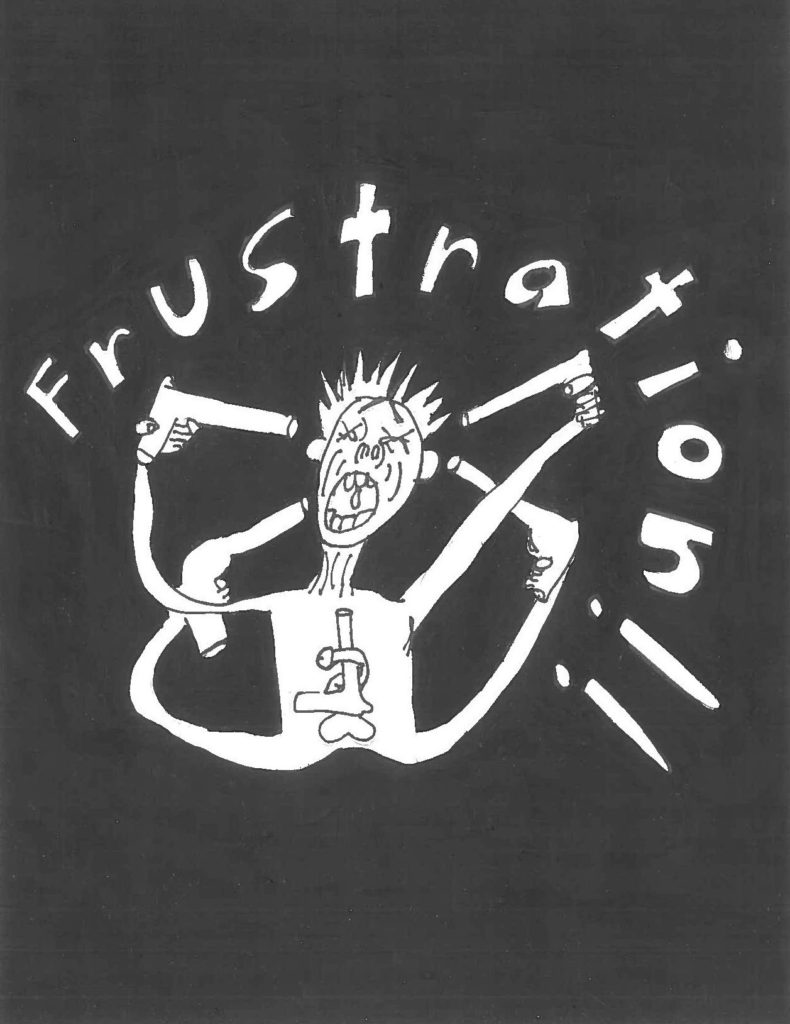

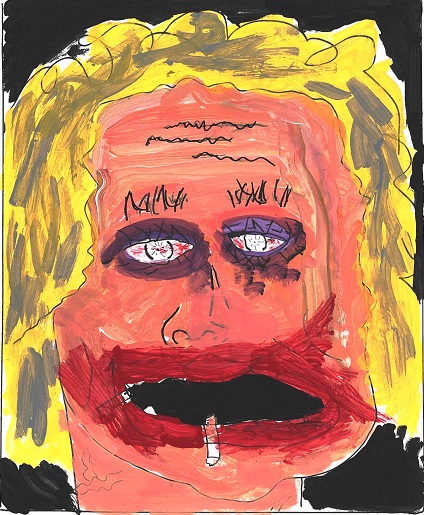
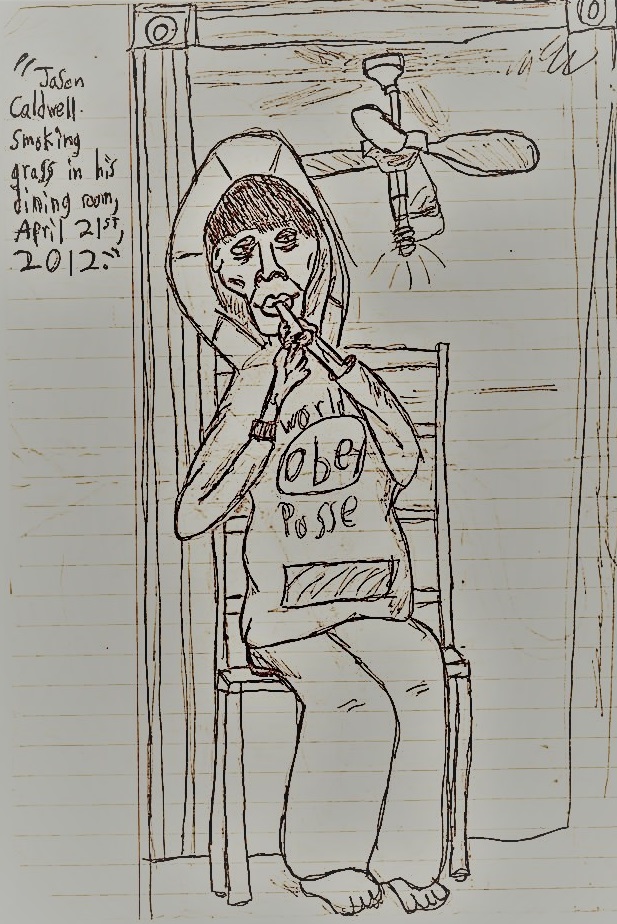


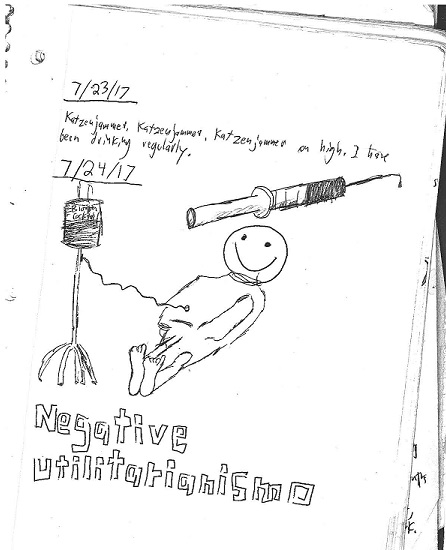

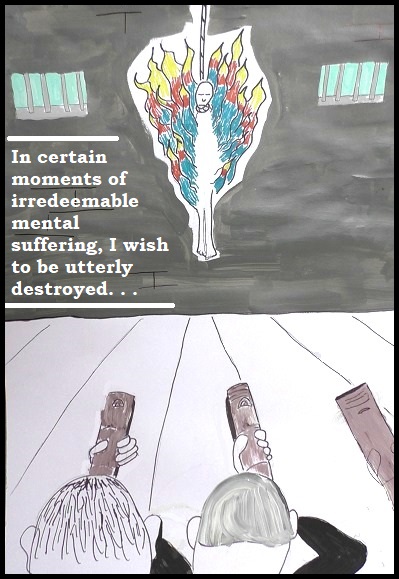

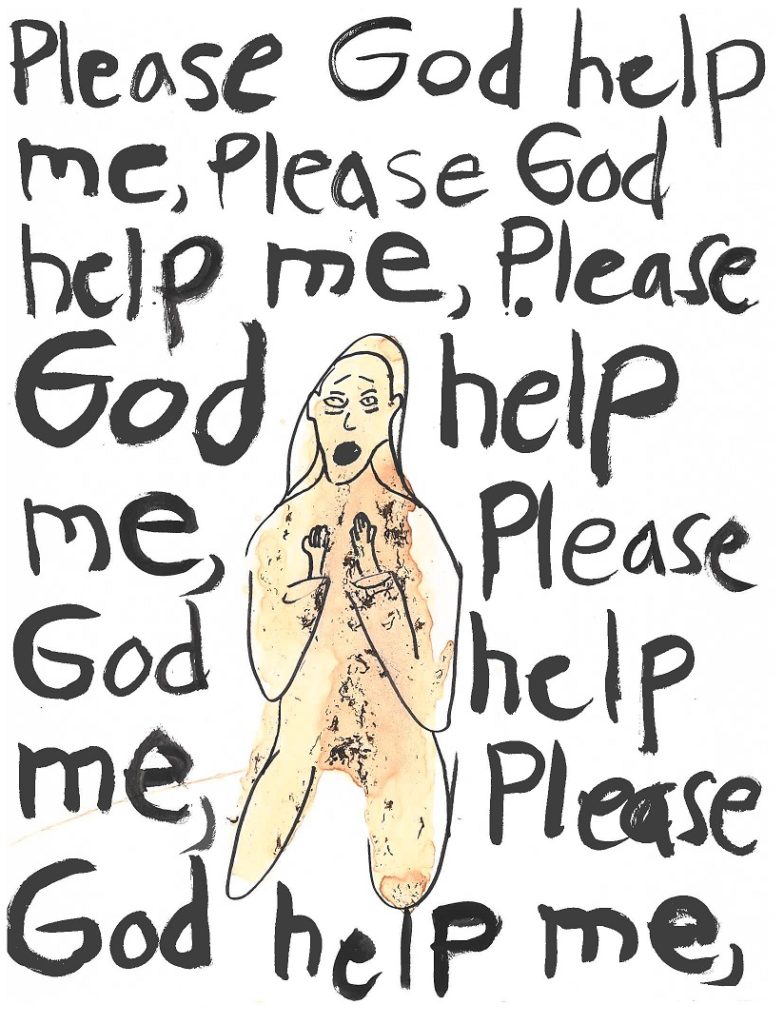

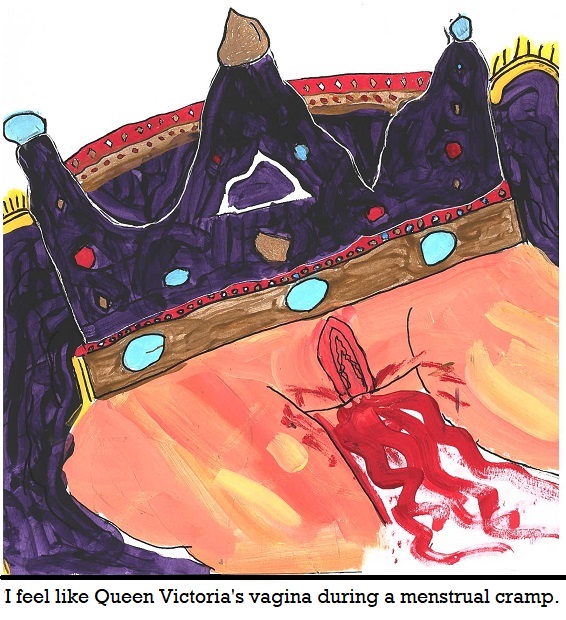
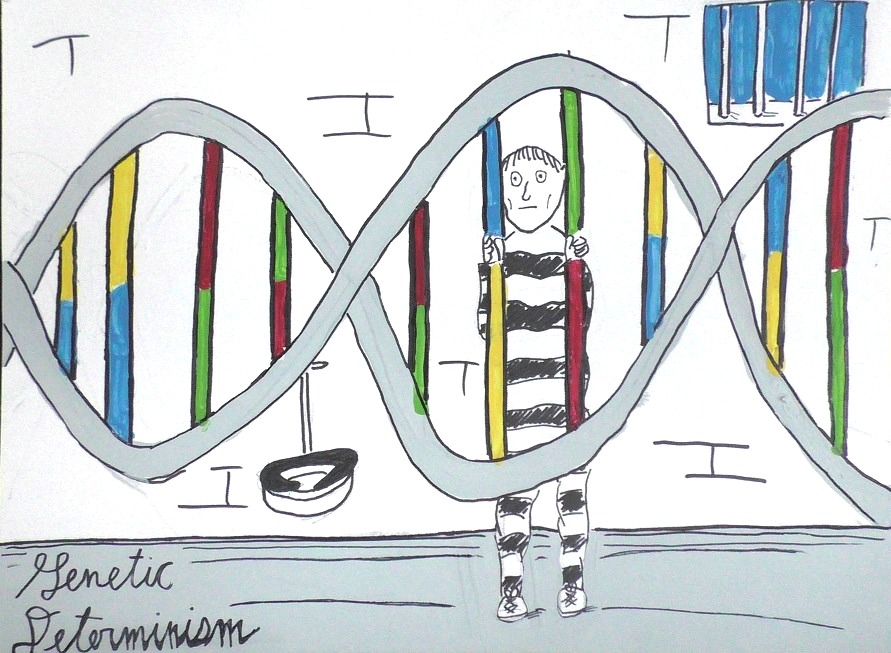
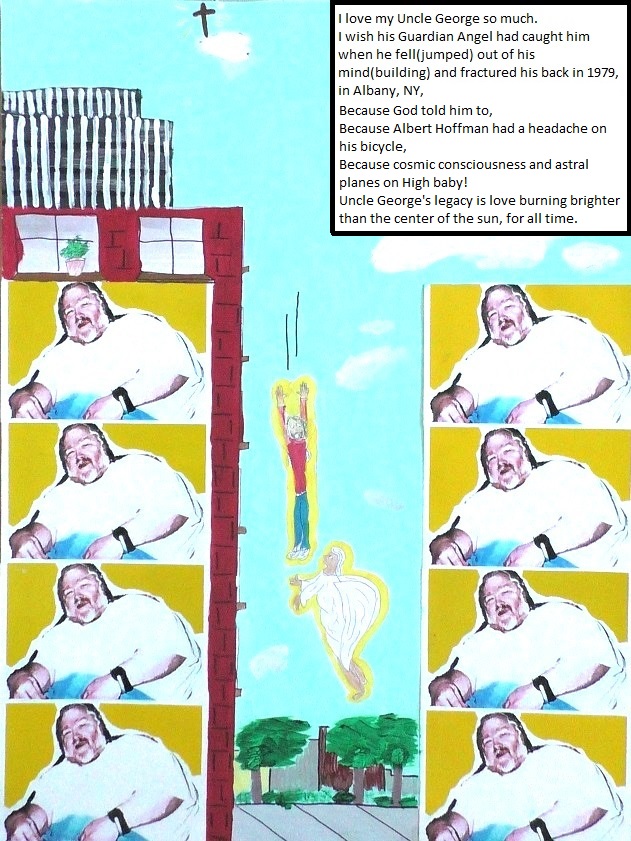

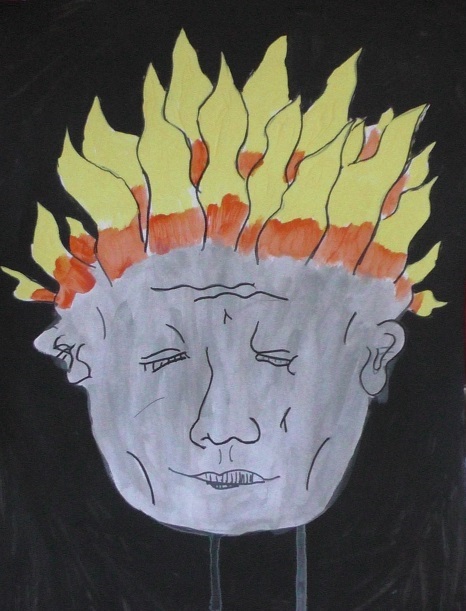
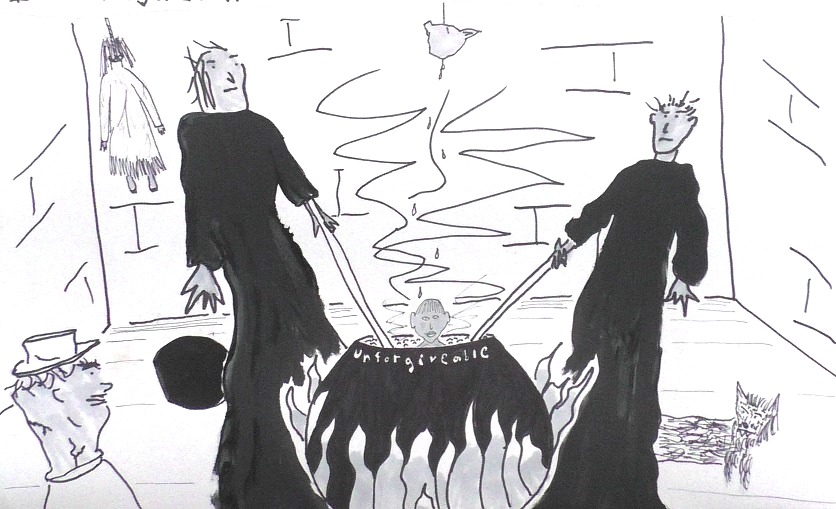

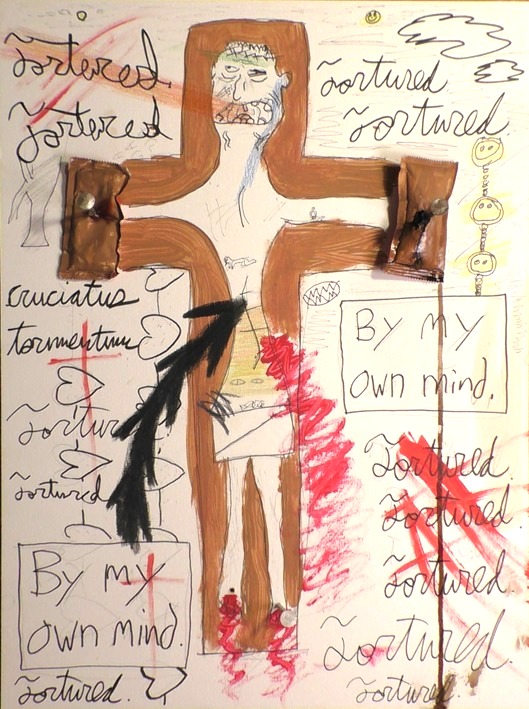
Here’s a slideshow of my mental illness themed pieces:
Disability Rights Art
I have been working with people with developmental and intellectual disabilities for ~9 years now. By working in group homes, assistant coaching with Special Olympics, and special education assistant teaching, I have had the privilege of spending most of my waking hours over that time around these people. I have loved every minute of it, and I would not trade the relationships I’ve formed in these settings for anything.
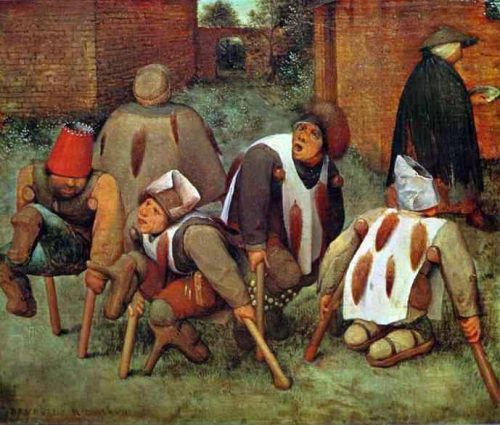
Western culture has come a long way in recognizing the inherent dignity of all people, and especially people with disabilities; For centuries the disabled were variously seen as burdens, objects of ridicule, or not even worth keeping alive: In Ancient Greece, children with disabilities were often left in the forest to die (a practice called ‘exposure’). During the European medieval period “‘idiot cages‘ became common in town centers to ‘keep people with disabilities out of trouble.’ They may have served as entertainment for townspeople.”2 In the 1930s and 1940s the Nazis attempted to exterminate (they ended up killing 300,000 people) adults and children they termed “lebensunwertes Leben” (life Unworthy of life) with the Action T-4 programme3. In the arts too there has been a long tradition of lampooning the disabled: Leonardo Da Vinci purportedly hired a “buffoon” to keep the Mona Lisa smiling, and Velasquez depicted Philip IV’s court dwarfs (every court had one).
But today, the developmentally and intellectually disabled are increasingly being seen as equals and deserving of the same opportunities and protections as everyone else. These people are advocating for their rights, and play a major role in their communities. We still have miles to go in solidifying the rights and respect that those with disabilities deserve, but these people have finally entered the moral circle, and we are on the right track.
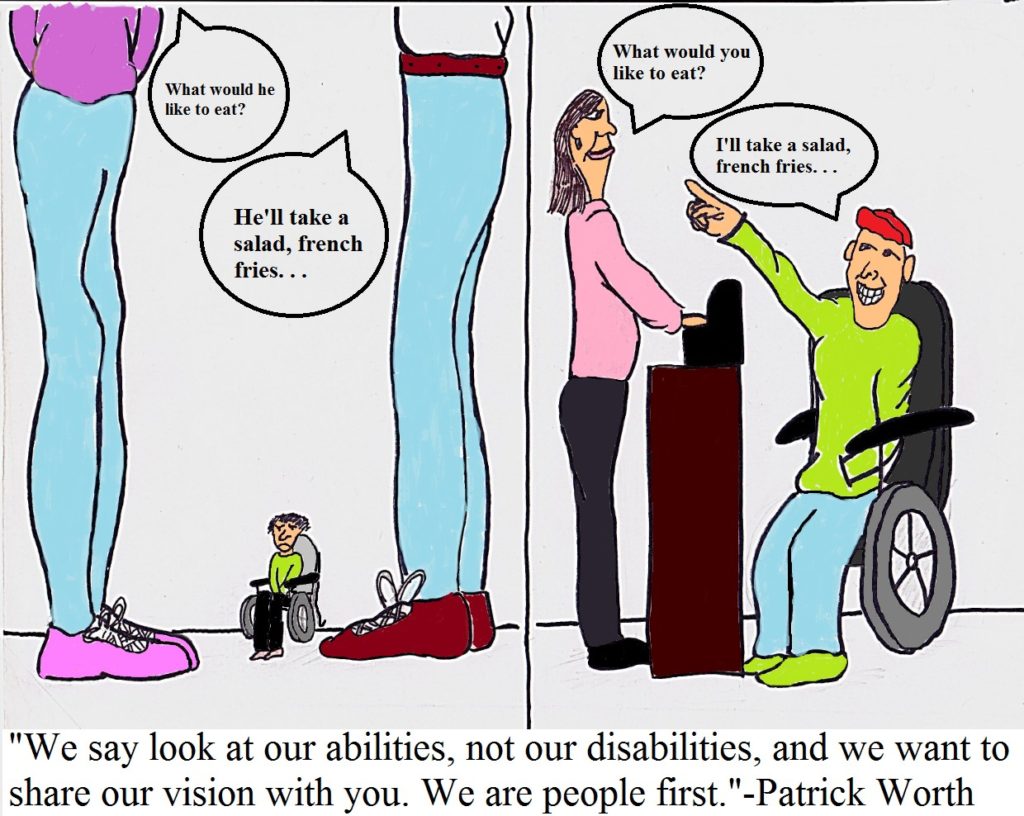
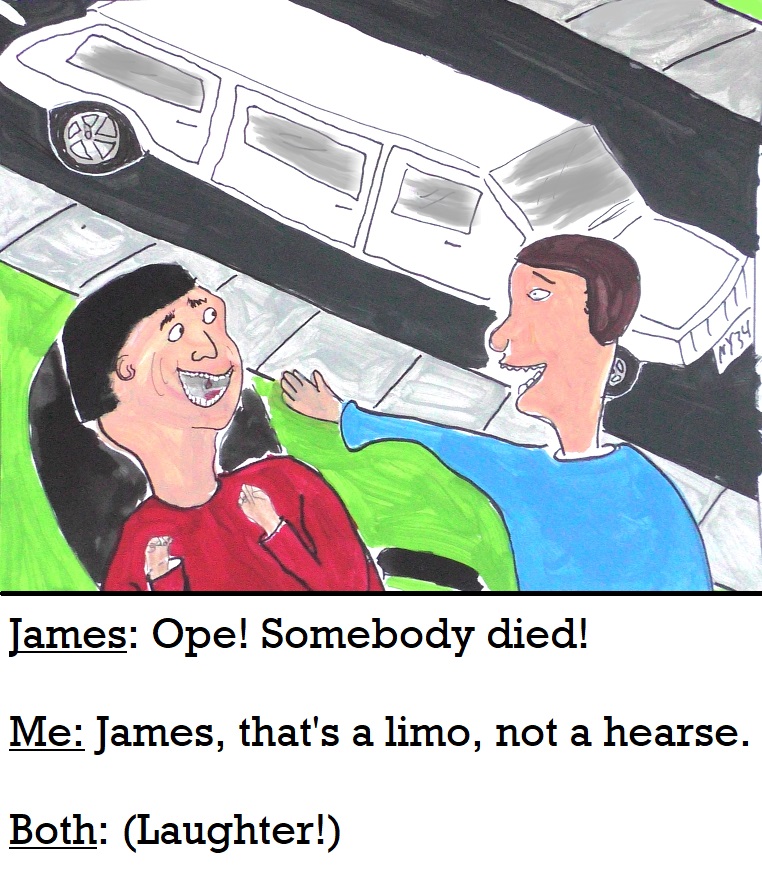

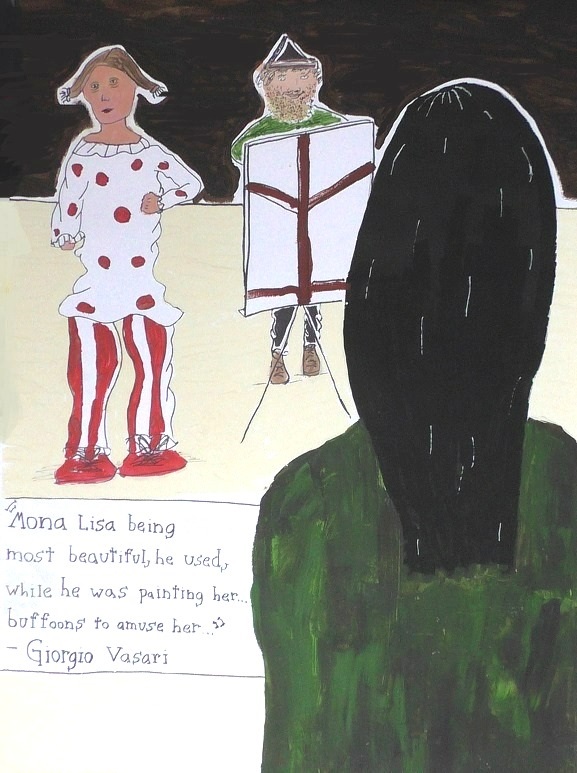
Meditation/Buddhist Art
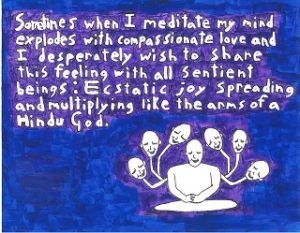

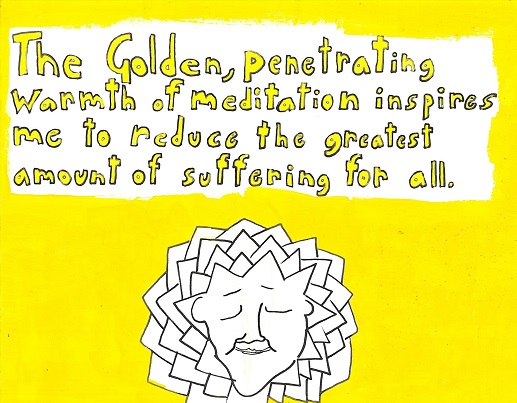
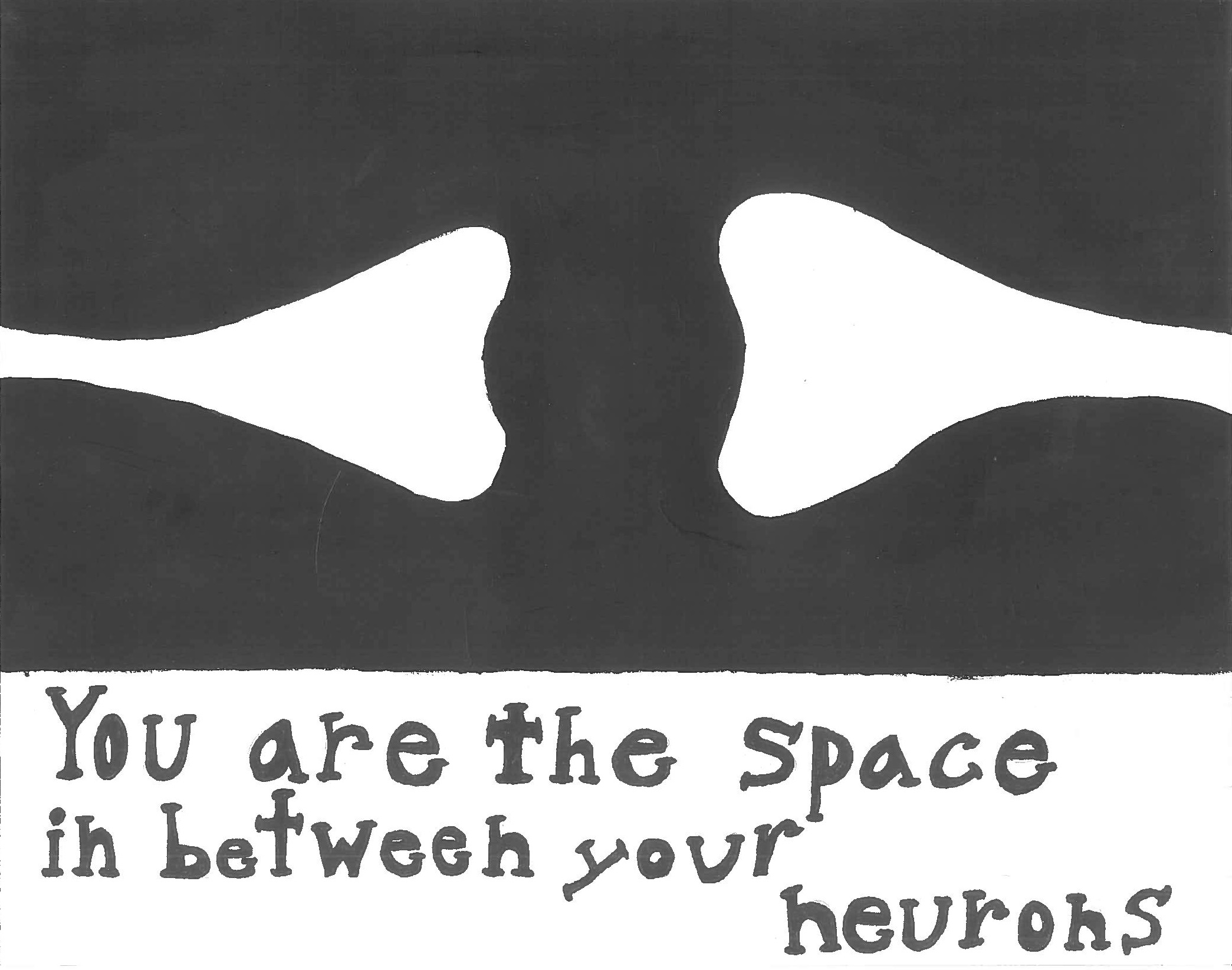
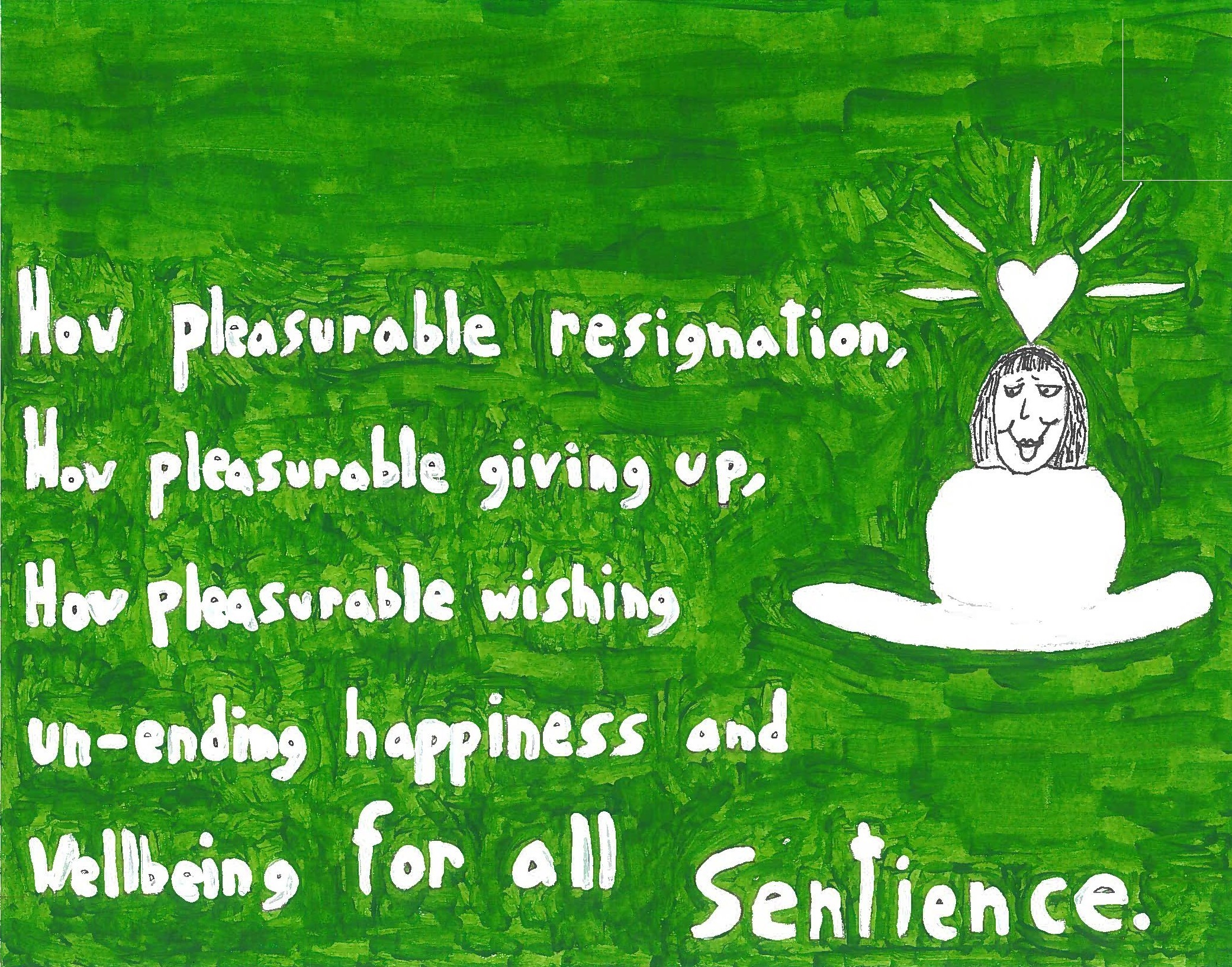
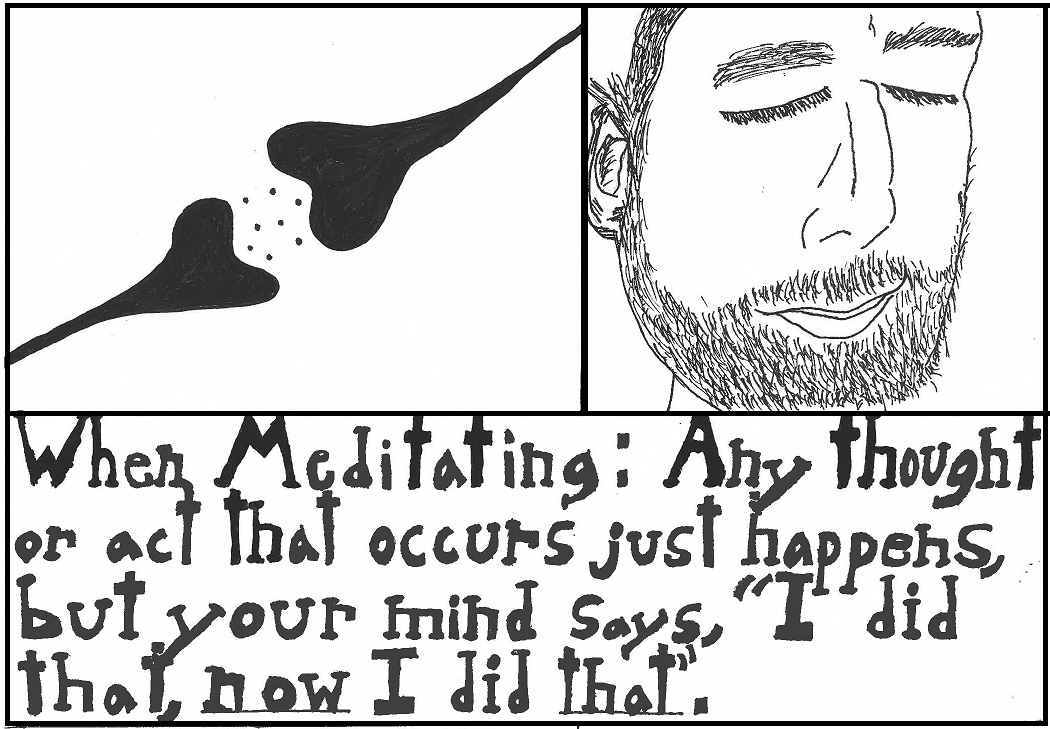
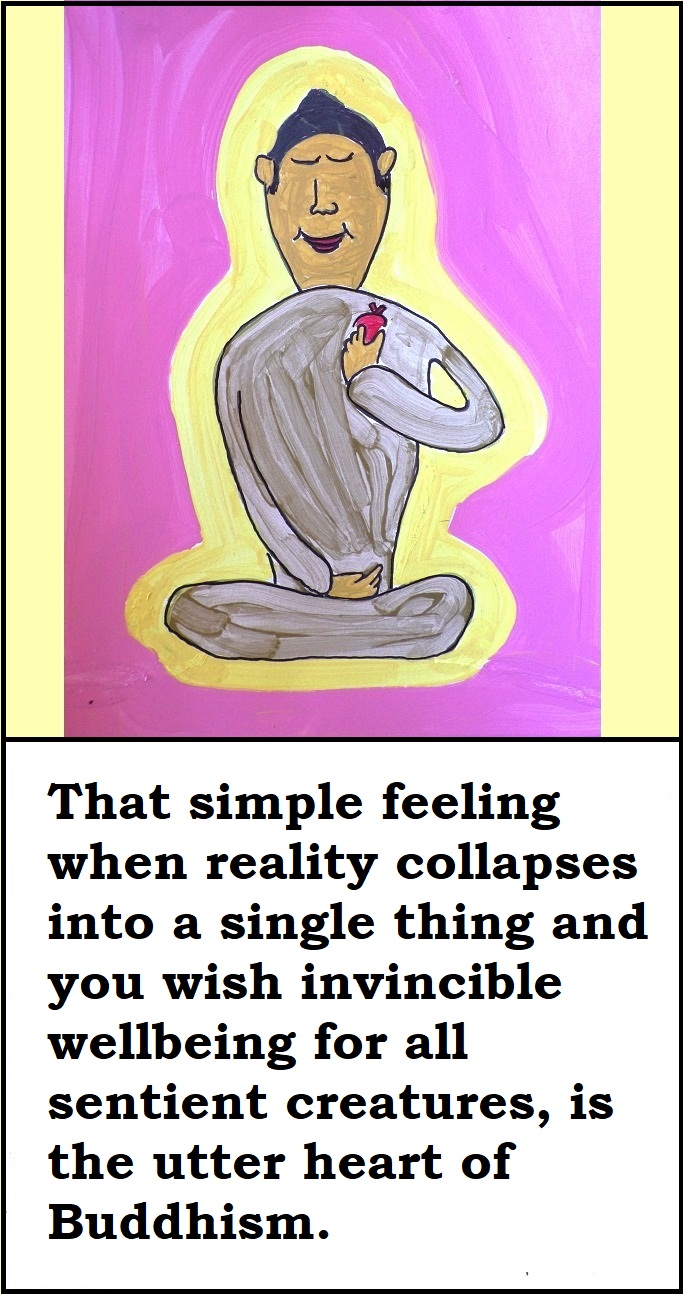
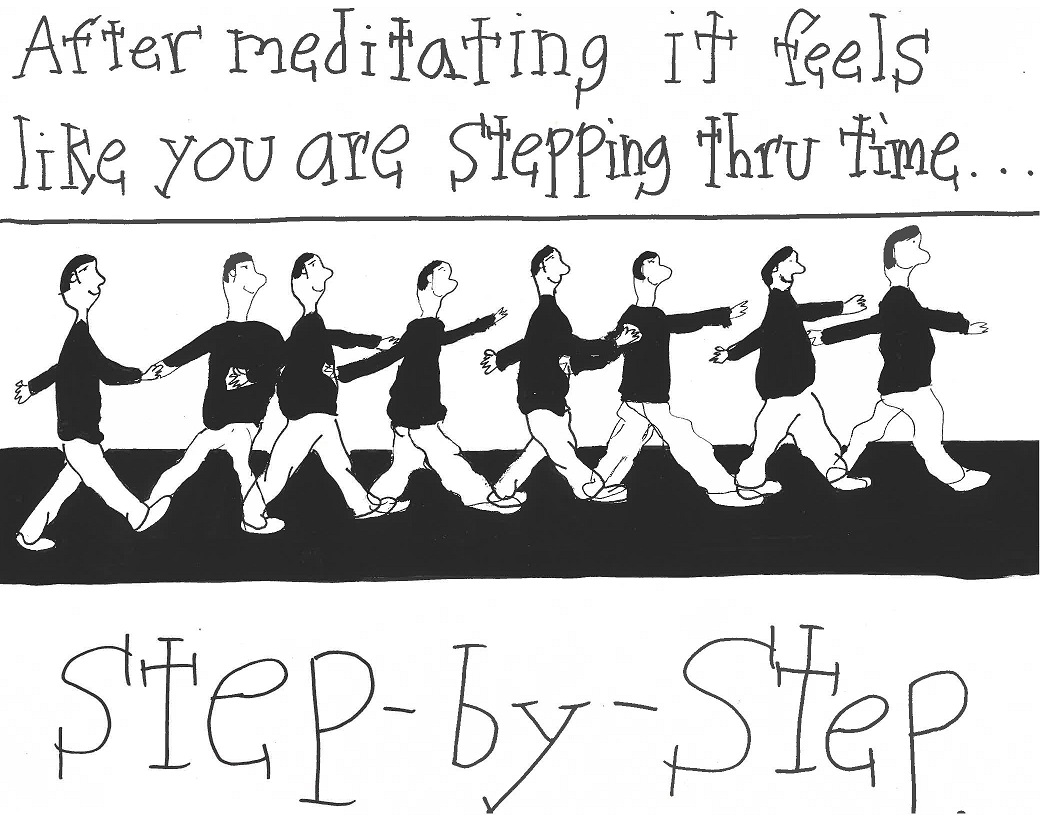

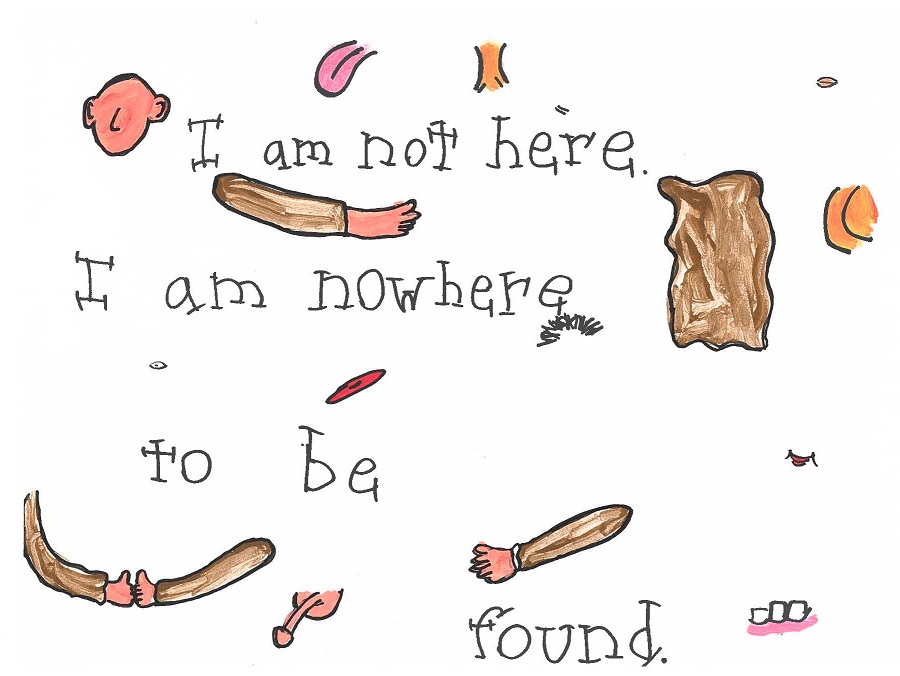


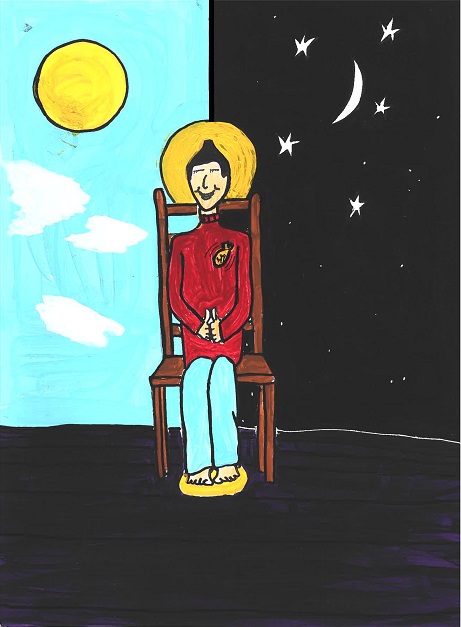

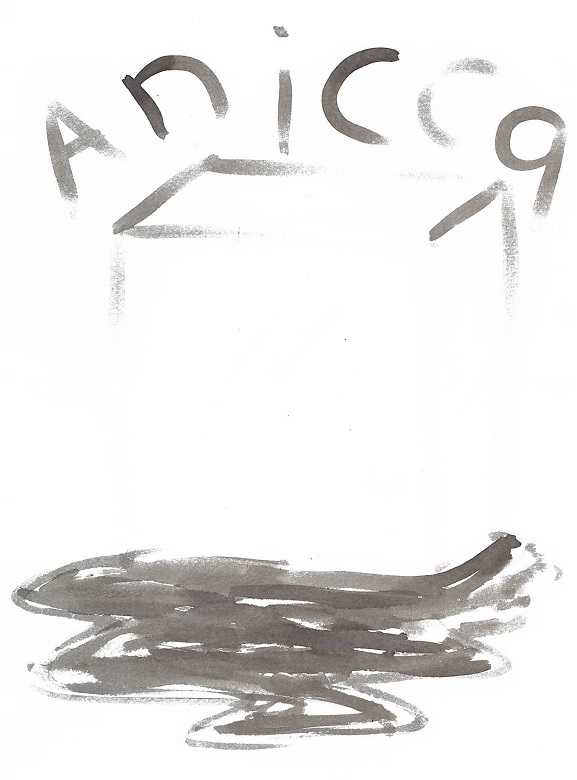
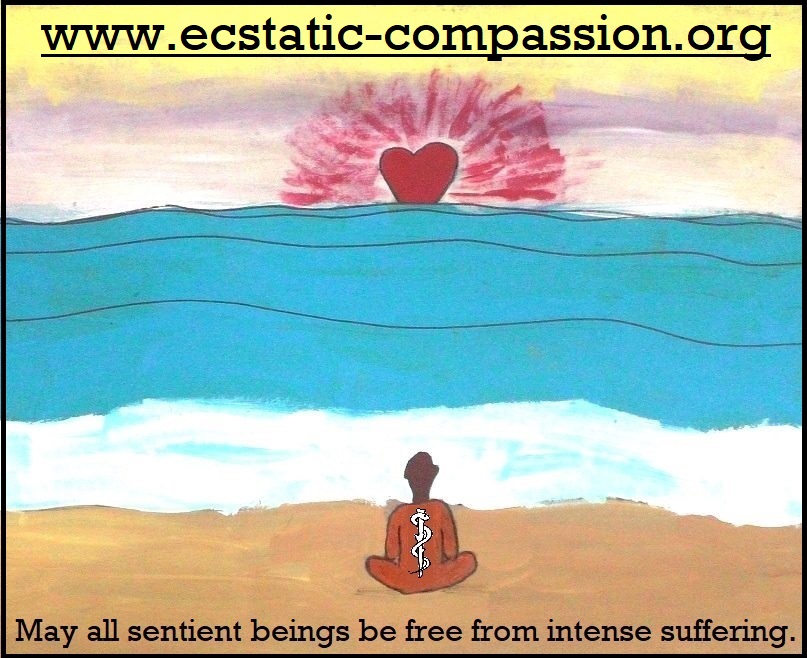
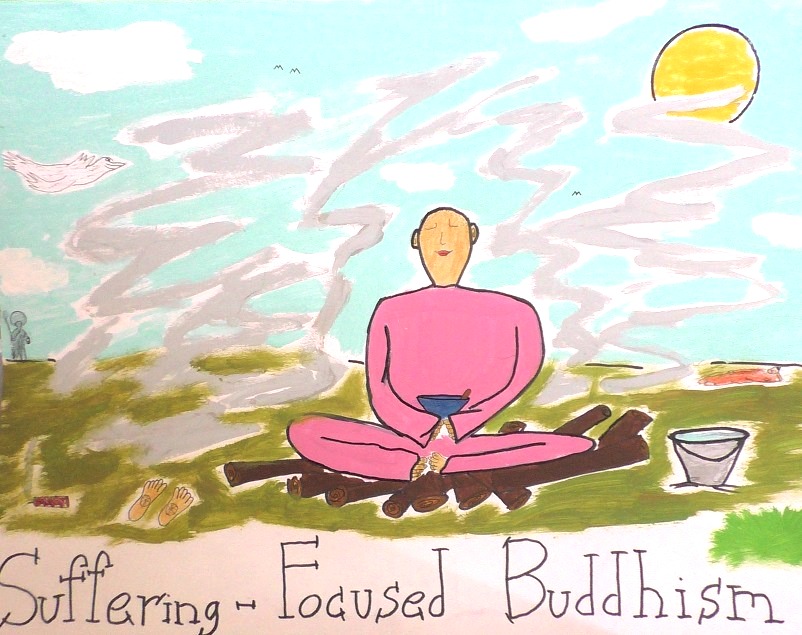
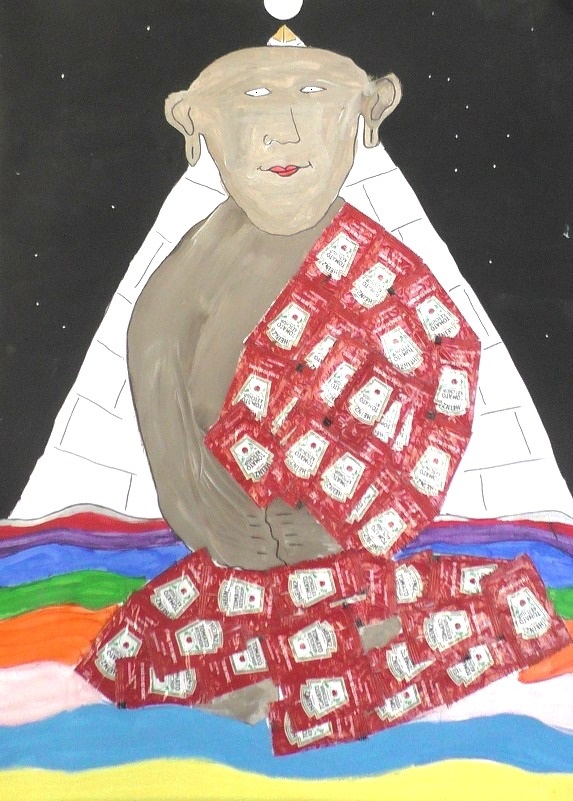
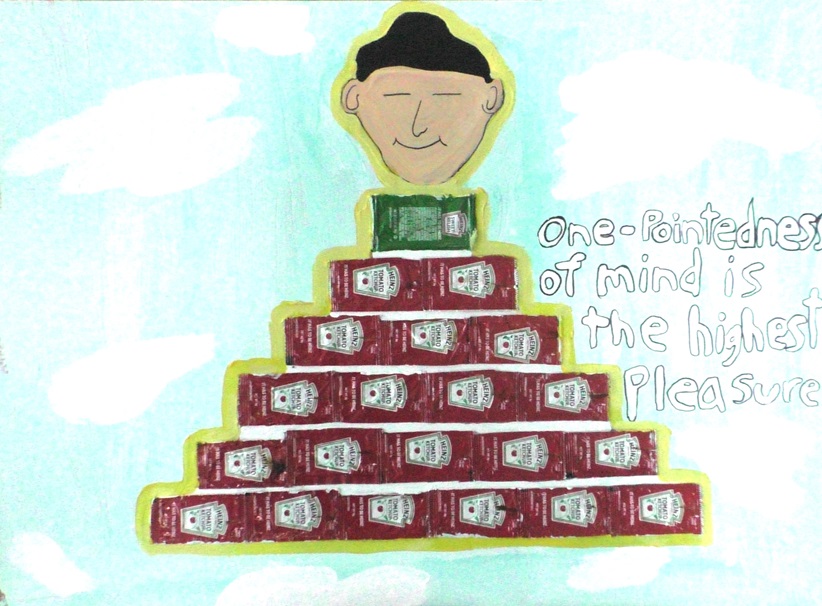
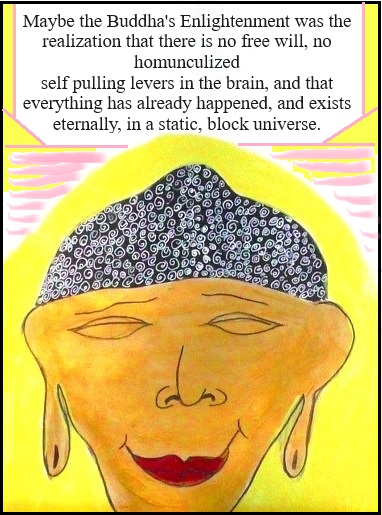
Philosophy Art
I like philosophy. These works are inspired by it.
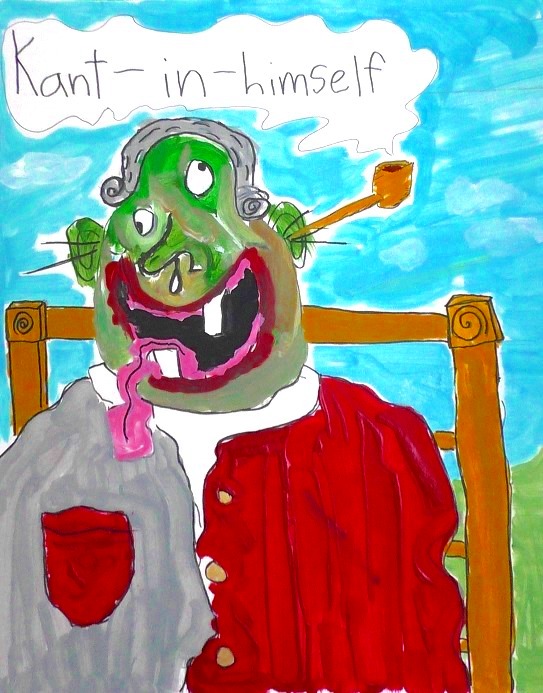
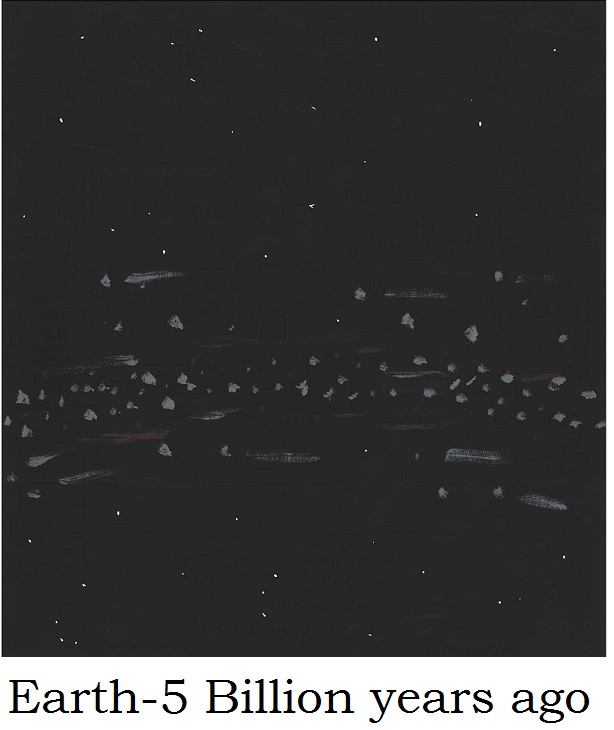
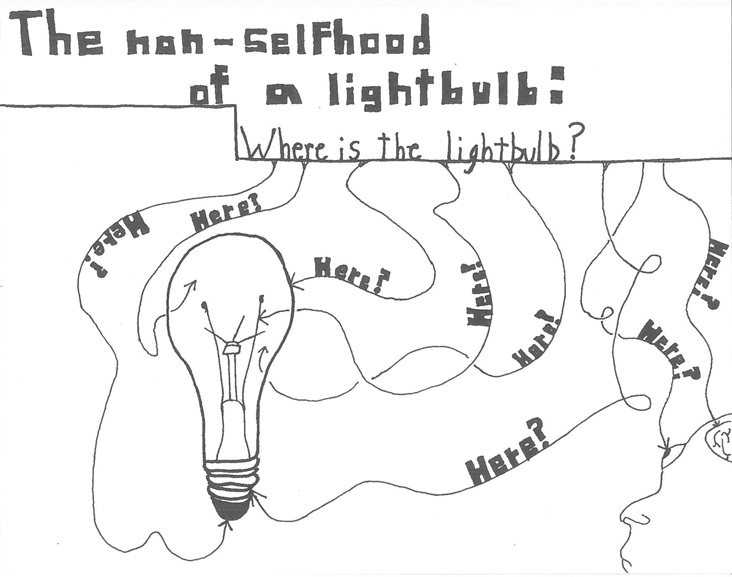
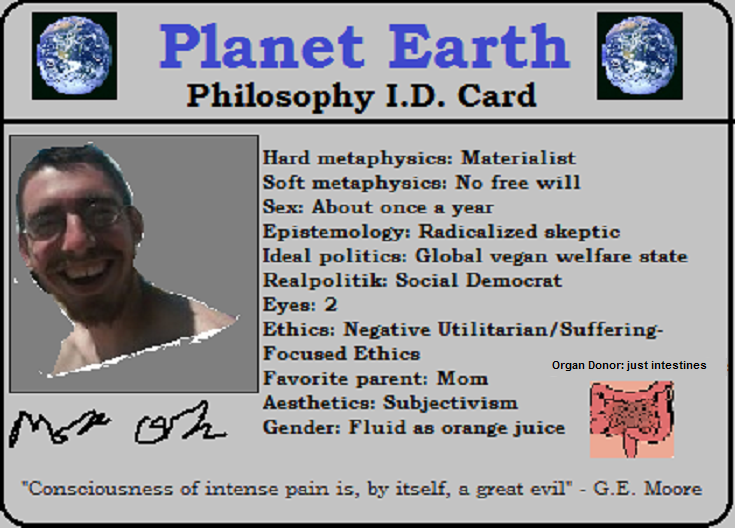
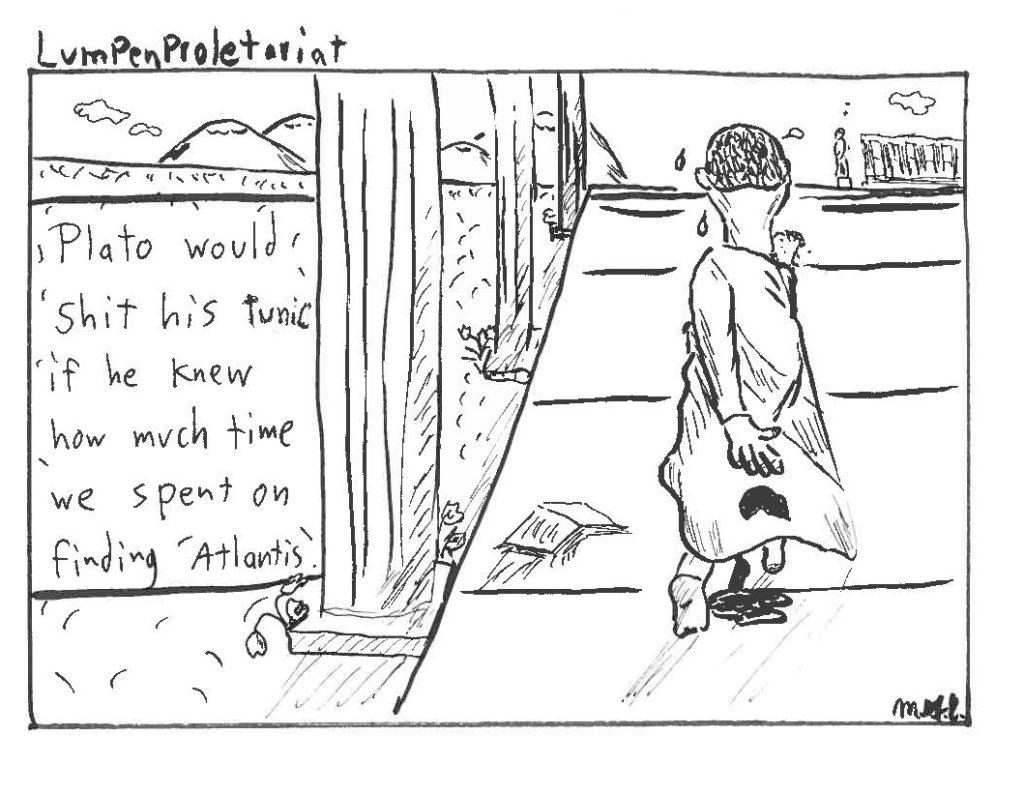
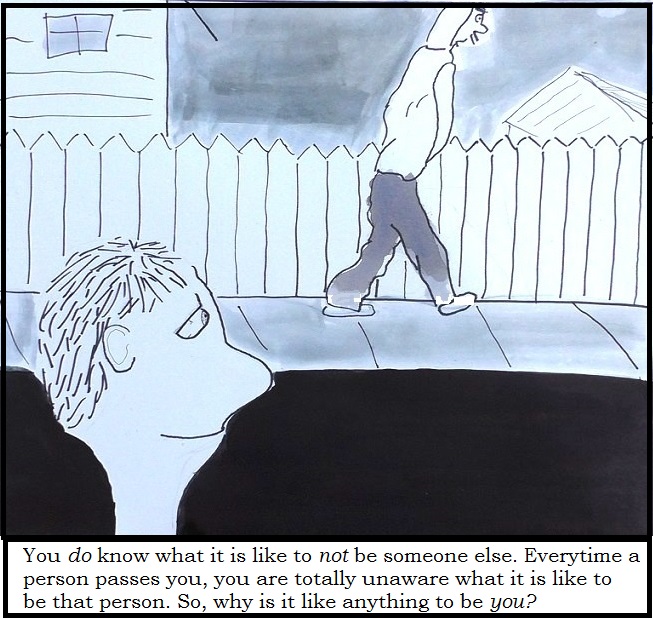
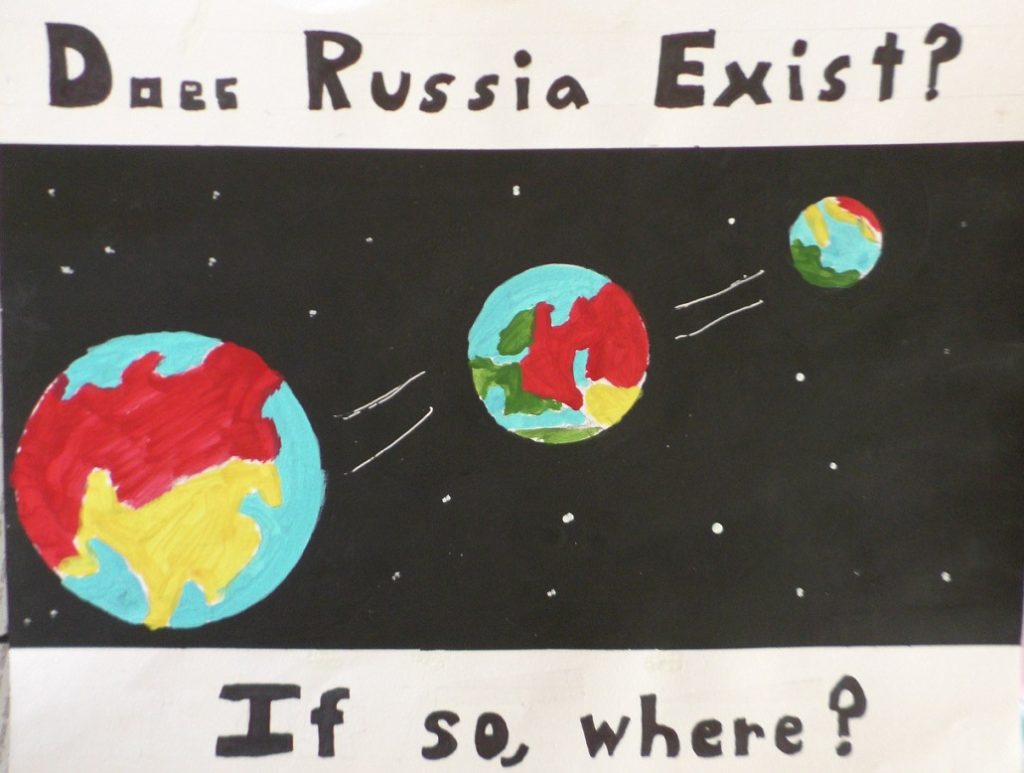
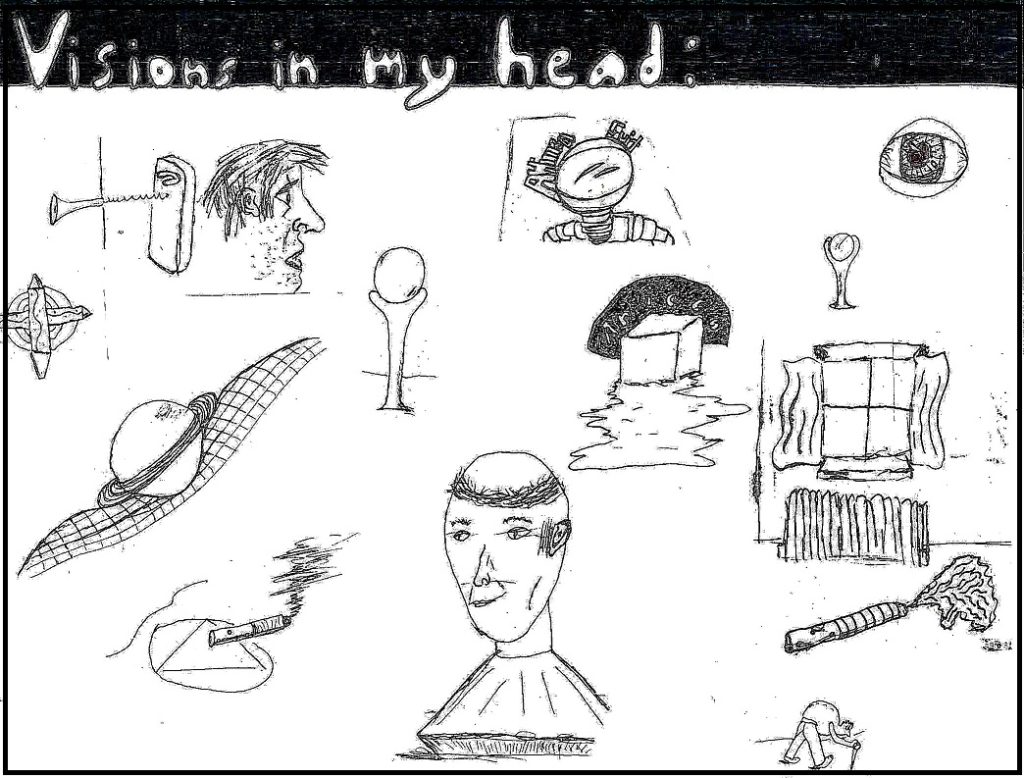
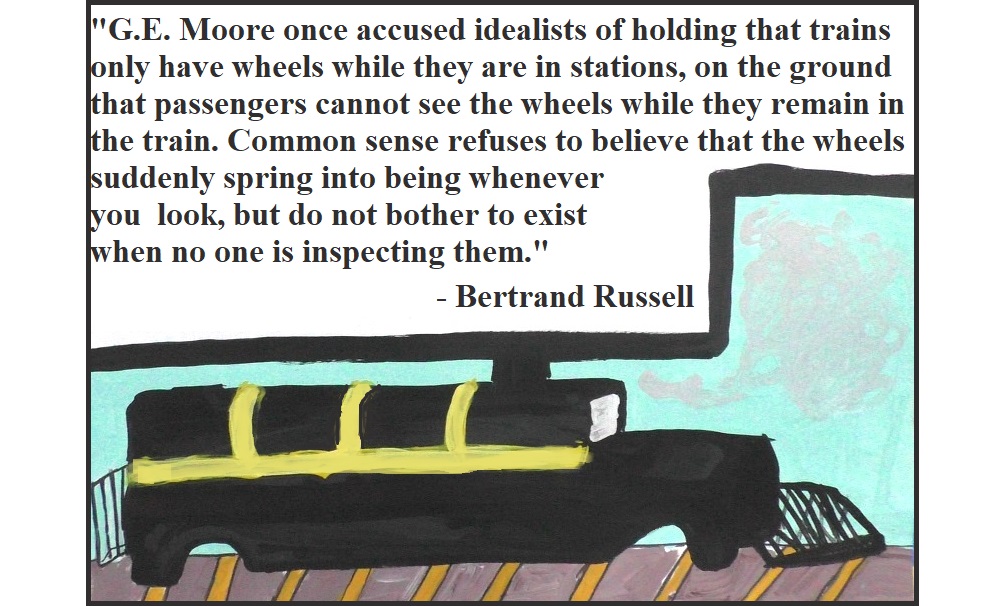
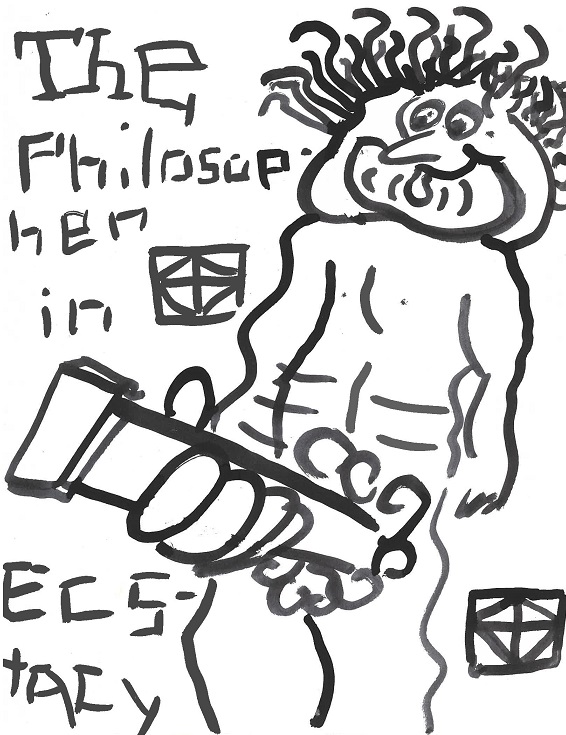
Miscellaneous Art





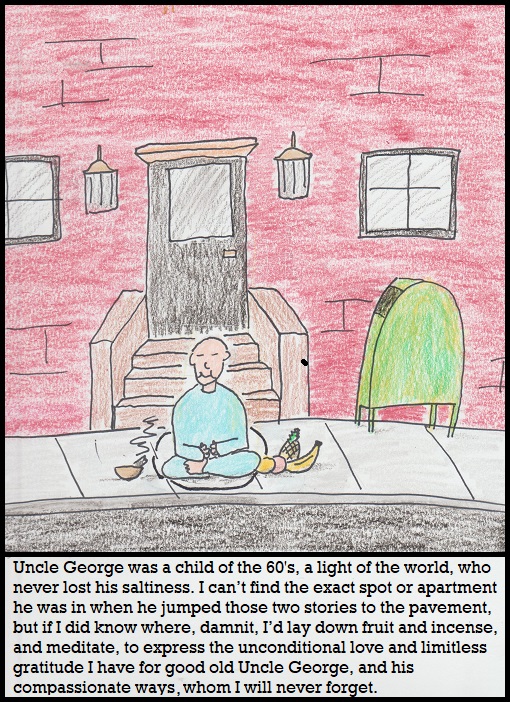

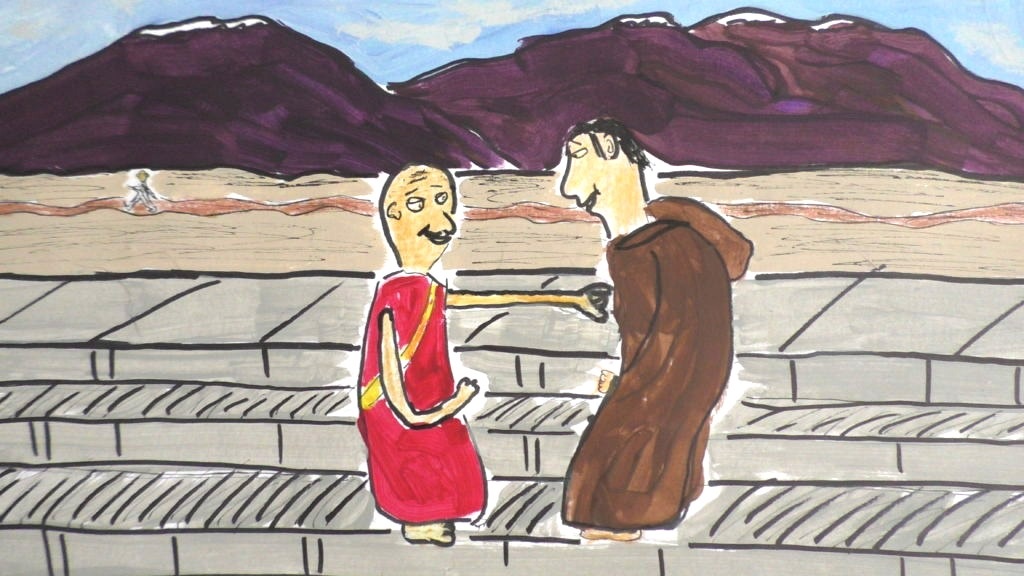
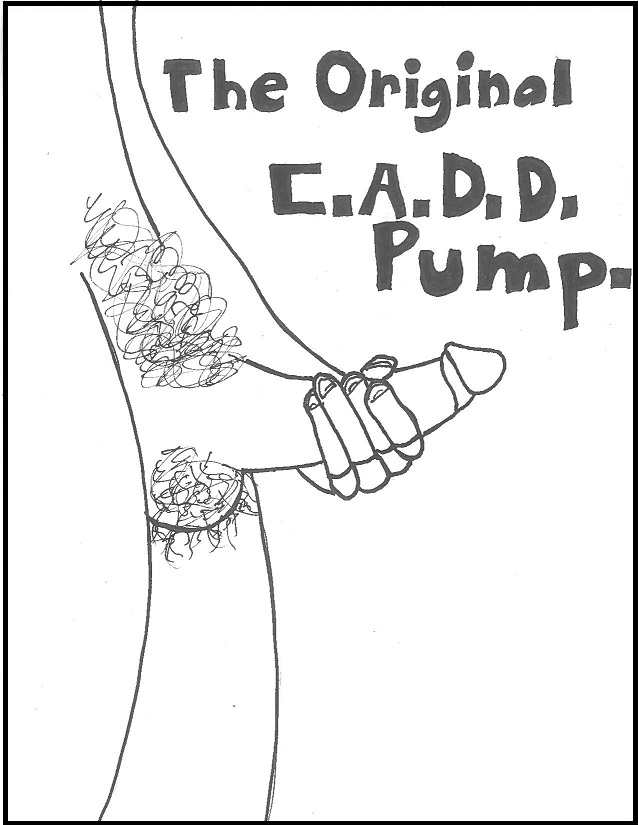
Citations
- National Geographic. “Invertebrates Pictures and Facts” National Geographic. https://www.nationalgeographic.com/animals/invertebrates/. Accessed 28 Jan 2021
- Minnesota Council on Developmental Disabilities. “Parallels in Time-The Middle Ages, Renaissance, and Reformation” Minnesota Council on Developmental Disabilities. https://mn.gov/mnddc/parallels/two/2.html. Accessed 28 Jan 2021
- Wikipedia. “Aktion T4” Wikipedia. https://en.wikipedia.org/wiki/Aktion_T4


